

How to Write an Image Analysis Essay in 6 Easy Steps
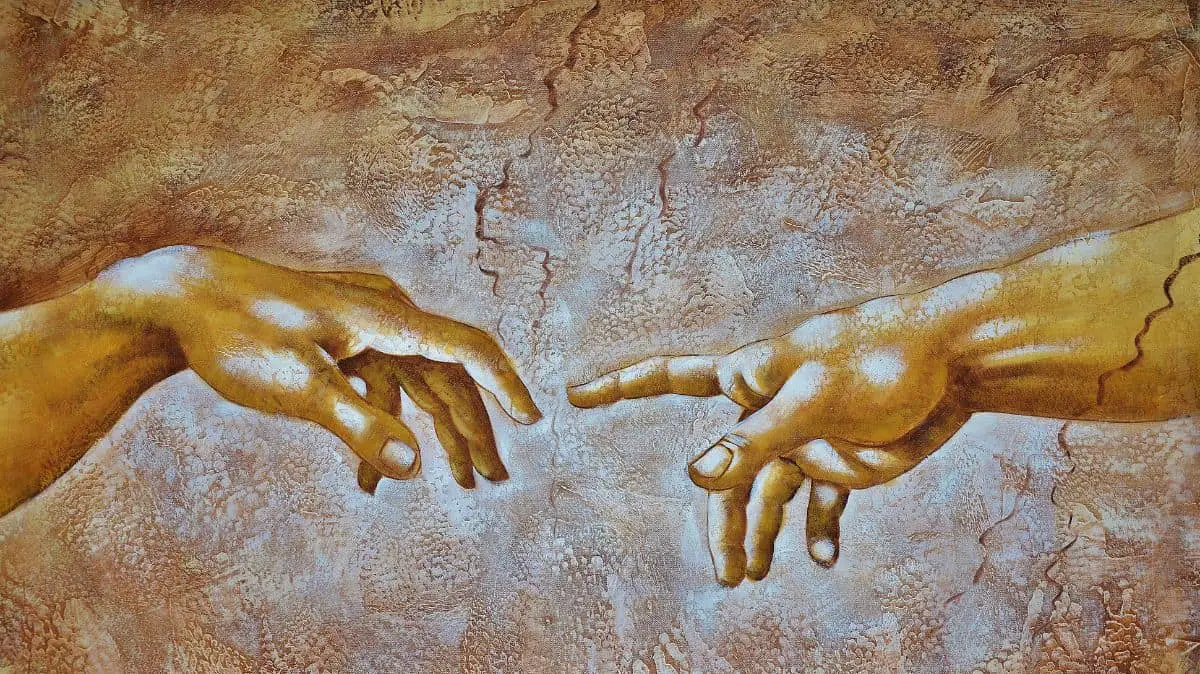
Writing an analysis of a picture can be a little daunting, especially if analyzing and essay writing are not your strengths. Not to worry. In this tutorial, you’ll learn how to do it, even if you’re a beginner.
To write an effective visual analysis, all you need to do is break the image into parts and discuss the relationship between them. That’s it in a nutshell.
Writing an image analysis essay, whether you’re analyzing a photo, painting, or any other kind of an image, is a simple, 6-step process. Let me take you through it.
Together, we’ll analyze a simple image and write a short analysis essay based on it. You can analyze any image, such as a photo or a painting, by following these steps.
Here is a simple image we’ll analyze.

And we’re ready for the…
6 Steps to Writing a Visual Analysis Essay
Step 1: Identify the Elements
When you look at this image, what do you see?
Right now, you are not just a casual observer. You are like a detective who must inspect things thoroughly and be careful not to miss any details.
So, let’s put on our Sherlock Holmes hat, grab a magnifying glass, and make a list of all the major and some minor elements of this picture.
What do we observe?
- Children. How many? Four.
- Children’s hands. Four pairs.
Great. These are all human elements. In fact, it would be useful for us to have two categories of elements: human and non-human.
When we group elements into categories, it will help us later when we’ll be writing the essay. Categories make it easier to think about the elements.
What other elements do we see?
- The hands are holding soil.
- Each handful of soil also has a tiny plant in it.
- Finally, we see the green lawn or ground on which the children stand.
These are all of the obvious elements in the image. But can we dig deeper and observe more?
Again, wearing our Sherlock Holmes hat, our job is to gather information that may not be immediately obvious or noticeable.
Let’s take another look, using our detective tentacles:
- The children’s hands are arranged in a circle.
- The children’s skin color varies from lighter to darker.
- The children wear summer clothes.
You may have noticed these elements even when you first saw the image. In that case, great job!
It looks like we’ve covered all the elements. We’re ready to move on to the next step.
Step 2. Detect Symbols and Connections
What does Sherlock Holmes or any good detective do after basic observation? It is time to think and use our logic and imagination.
We will now look for symbols and any connections or relationships among the elements.
Identifying Symbols
- Children symbolize future and hope.
- Their hands form a circle, creating a unifying effect. The symbol is unity, and there is power in unity.
- Children’s hands hold soil, and soil symbolizes earth, perhaps planet Earth.
- The earth holds young plants which symbolize the environment and ecology.
- The young plants also symbolize youth and the future.
- The children wear summer clothes, and summer symbolizes happiness and freedom because this is when children are on vacation and enjoy life.
Great. Now, let’s see if we can make some connections and identify some relationships among the elements and symbols.
We will use our imagination to put together some kind of a meaning.
In analyzing an image, we want to understand what the creator or the artist is trying to convey.
Do artists and photographers always want to convey something or is it sometimes just a picture?
It doesn’t matter because we never know what the artist really thought when creating the work . We’re not mind readers.
But we can always gather meaning using our own logic and imagination. We can derive meaning from any image. And that’s all we need to do to write an analysis essay.
Finding Connections and Relationships
Let’s allow our imagination to roam free and write down a few thoughts. Some ideas will be more obvious than others.
- This entire image seems to be about the future of the environment.
- Why is this future important? It’s important because of the future generations, symbolized by the children.
- A strong sense of long-term future is conveyed because not only do the children hold plants, but these are baby plants. The message is “children hold future generations.”
- The variety of skin colors implies diversity. Also, the hands form a circle. Together, these two elements can mean: “global diversity.”
As you can see, we can derive really interesting meaning from even a simple image.
We did a great job here and now have plenty of material to work with and write about. It’s time for the next step.
Step 3. Formulate Your Thesis
In this step, your task is to put together an argument that you will support in your essay. What can this argument be?
The goal of writing a visual analysis is to arrive at the meaning of the image and to reveal it to the reader.
We just finished the analysis by breaking the image down into parts. As a result, we have a pretty good idea of the meaning of the image.
Now, we need to take these parts and put them together into a meaningful statement. This statement will be our thesis.
Let’s do it.
Writing the Thesis
This whole picture may mean something like the following:
This sounds good. Let’s write another version:
This sounds good, as well. What is the difference between the two statements?
The first one places the responsibility for the future of the planet on children.
The second one places this responsibility on the entire humanity.
Therefore, the second statement just makes more sense. Based on it, let’s write our thesis.
We now have our thesis, which means we know exactly what argument we will be supporting in the essay.
Step 4: Write the Complete Thesis Statement
While a thesis is our main point, a thesis statement is a complete paragraph that includes the supporting points.
To write it, we’ll use the Power of Three. This means that we are going to come up with three supporting points for our main point.
This is where our categories from Step 1 will come in handy. These categories are human and non-human elements. They will make up the first two supporting points for the thesis.
The third supporting point can be the relationships among the elements.
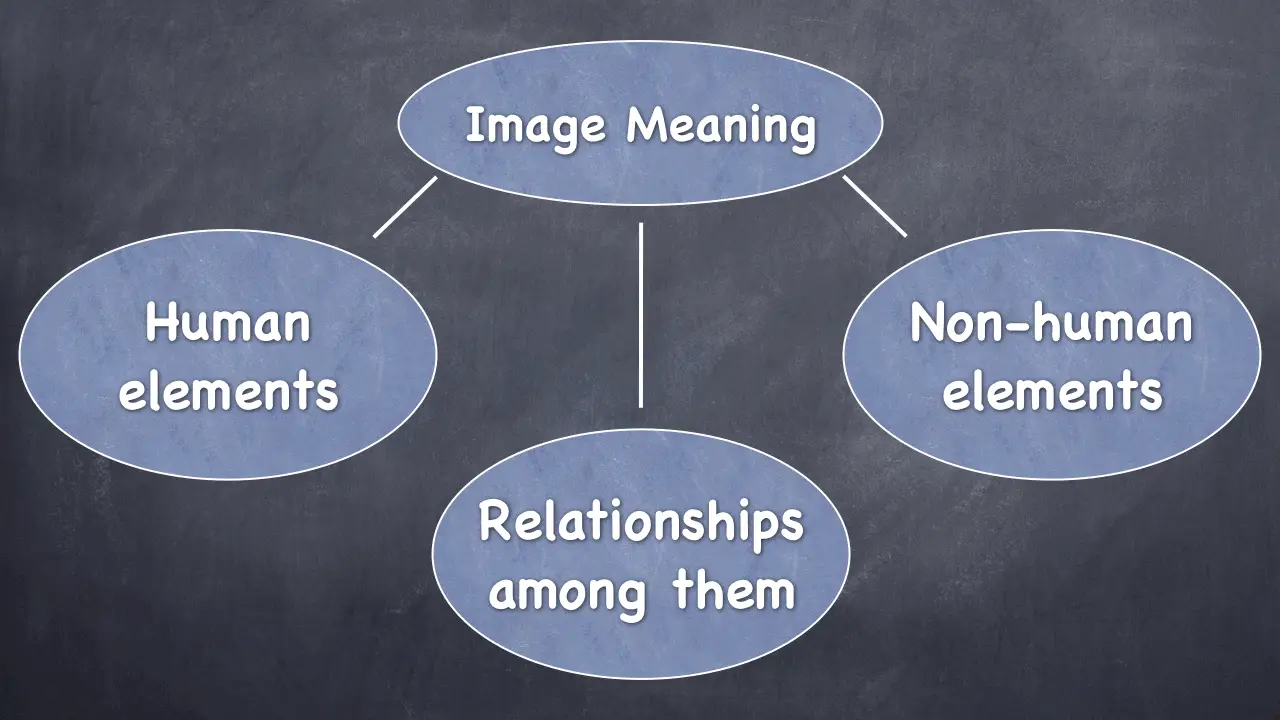
We can also pick a different set of supporting points. Our job here is to simply have three supporting ideas that make sense to us.
For example, we have our elements, symbols, and connections. And we can structure the complete argument this way:
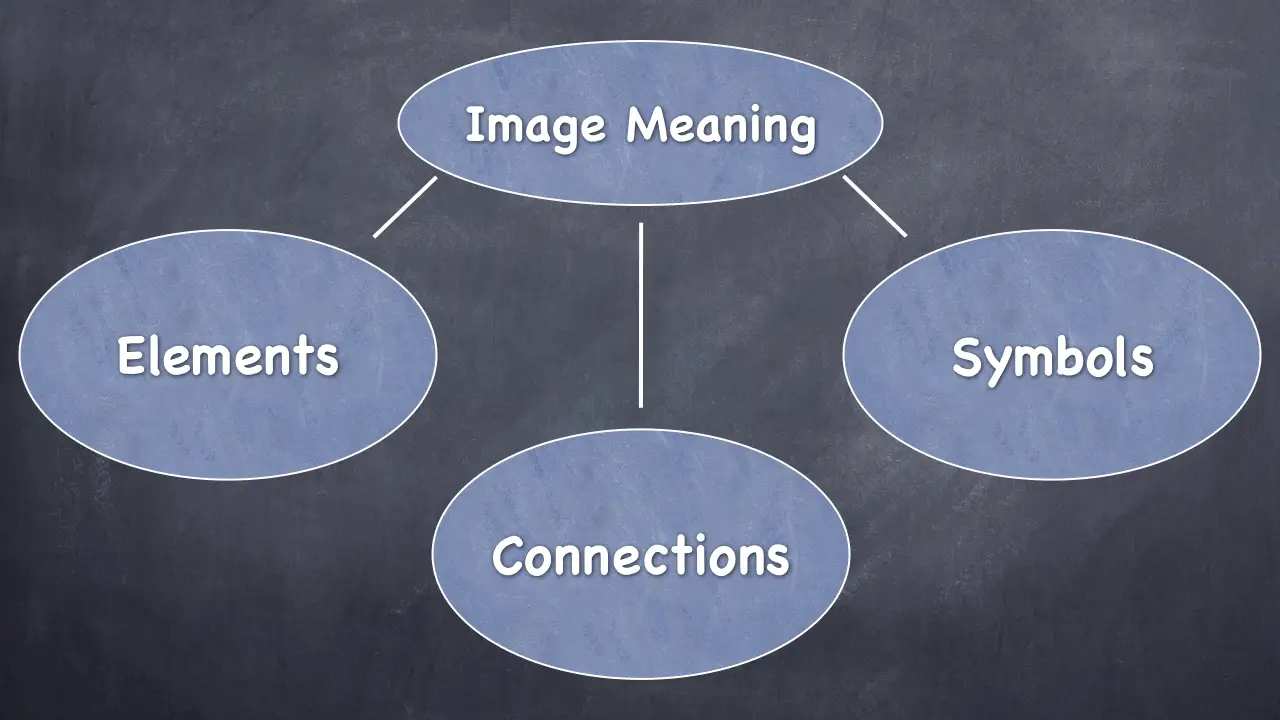
All we really need is one way to organize our thoughts in the essay. Let’s go with the first version and formulate the supporting points.
Here’s our main point again:
Here are our supporting points:
- The photographer uses the image of children to symbolize the future.
- The non-human elements in the photo symbolize life and planet Earth.
- The author connects many ideas represented by images to get the message across.
Now we have everything we need to write the complete thesis statement. We’ll just put the main and the supporting statements into one paragraph.
Thesis Statement
Step 5: write the body of your essay.
At this point, we have everything we need to write the rest of the essay. We know that it will have three main sections because the thesis statement is also our outline.
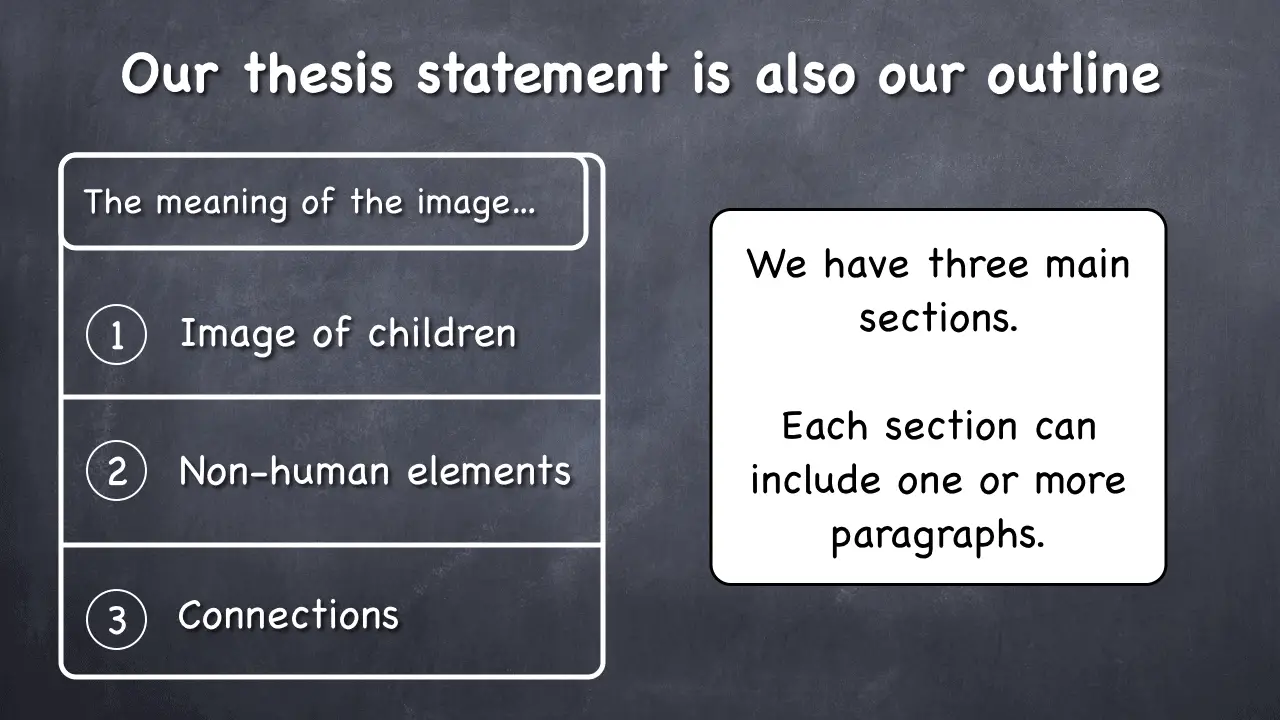
We’re ready to write the body of the essay. Let’s do it.
Body of the Essay (3 paragraphs)
“The author of this photograph chose children and, more specifically, children’s hands in order to convey his point. In many, if not all human cultures, children evoke the feelings of hope, new beginnings, and the future. This is why people often say, ‘Children are our future.’ Furthermore, the children in the photo are of different ethnic backgrounds. This is evident from their skin colors, which vary from lighter to darker. This detail shows that the author probably meant children all over the world.
The non-human elements of the picture are the plants and the soil. The plants are very young – they are just sprouts, and that signifies the fragility of life. The soil in which they grow evokes the image of our planet Earth. Soil also symbolizes fertility. The clothes the children wear are summer clothes, and summer signifies freedom because this is the time of a long vacation for school children. Perhaps the author implies that the environment affects people’s freedom.
Finally, the relationships and connections among these elements help the photographer convey the message that humans should be mindful of their decisions today to ensure a bright future for the planet. This idea can be arrived at by careful examination. First, the children’s hands are arranged in a circle, which is a symbol of our planet and also signifies the power of unity. The future depends on people’s cooperation. Second, the children seem to be in the process of planting. The author emphasizes long-term future because the children hold baby plants. In other words, they ‘hold the future of other children’ in their hands. Third, the placement of the sprouts, which rest inside the soil in children’s hands, is a strong way to suggest that the future of the ecology is literally ‘in our hands.’”
Step 6. Add an Introduction and a Conclusion
Before we continue, I have an entire detailed article on how to write an essay step-by-step for beginners . In it, I walk you through writing every part of an essay, from the thesis to the conclusion.
Introduction
That said, your introduction should be just a sentence or two that go right before you state the thesis.
Let’s revisit our thesis statement, and then write the introduction.
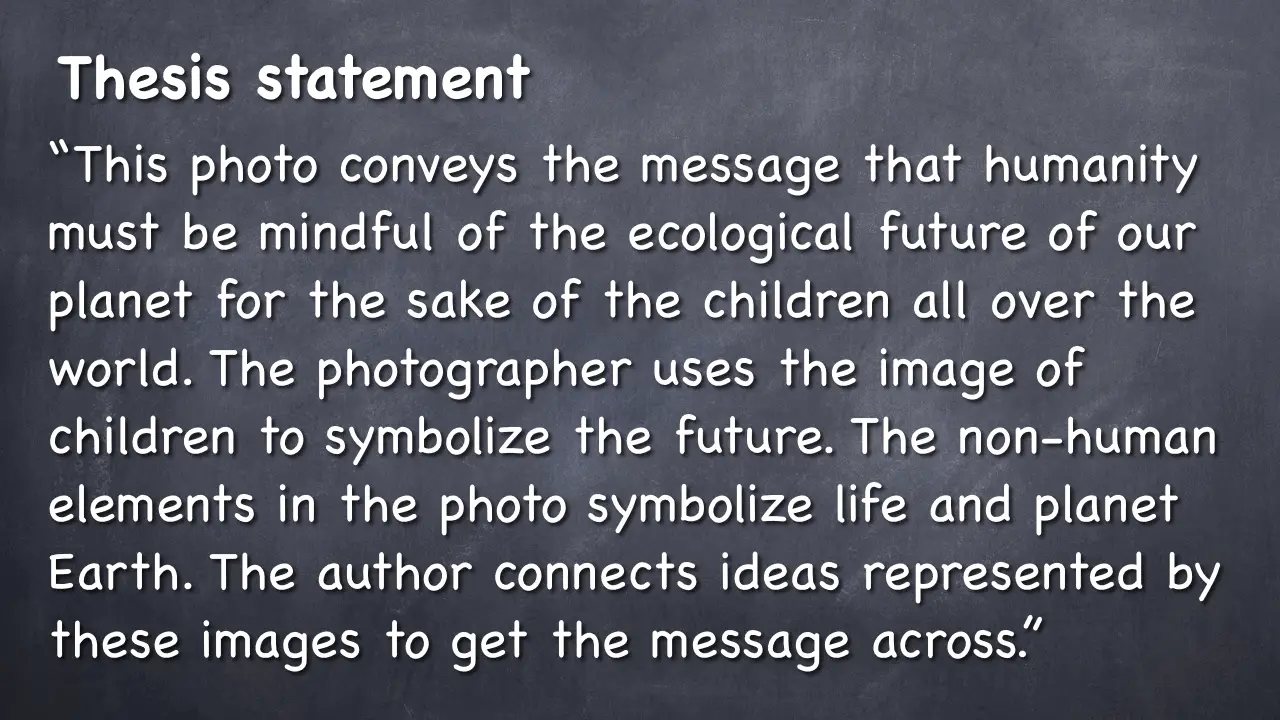
And now let’s write an introductory sentence that would make the opening paragraph complete:
Now, if you read this intro sentence followed by the thesis statement, you’ll see that they work great together. And we’re done with the opening paragraph.
Your conclusion should be just a simple restatement. You can conclude your essay in many ways, but this is the basic and time-proven one.
Let’s do it:
We simply restated our thesis here. Your conclusion can be one or more sentences. In a short essay, a sentence will suffice.
Guess what – we just wrote a visual analysis essay together, and now you have a pretty good idea of how to write one.
Hope this was helpful!
How to Write a 300 Word Essay – Simple Tutorial
How to expand an essay – 4 tips to increase the word count, 10 solid essay writing tips to help you improve quickly, essay writing for beginners: 6-step guide with examples, 6 simple ways to improve sentence structure in your essays.
Tutor Phil is an e-learning professional who helps adult learners finish their degrees by teaching them academic writing skills.
You Might Like These Next...
How to Write a Summary of an Article in 5 Easy Steps
https://youtu.be/mXGNf8JMY4Y When you’re summarizing, you’re simply trying to express something in fewer words. I’m Tutor Phil, and in this tutorial, I’ll show you how to summarize an...
How to Write Strong Body Paragraphs in an Essay
https://youtu.be/OcI9NKg_cEk A body paragraph in an essay consists of three parts: topic sentence, explanation, and one or more examples. The topic sentence summarizes your paragraph completely...
Want to create or adapt books like this? Learn more about how Pressbooks supports open publishing practices.
21 Image Analysis Peer Review Assignment Guidelines
- Is the intro effective? Does it make the reader want to continue? How could this be improved?
- Does the introduction contextualize the community and the issue in it? Does it provide an overview of the analysis and conclusions?
- Identify the thesis. Is it clear? Is it arguable? Is it a road map? How could the thesis be improved? Does the thesis include at least two rhetorical elements (ethos, pathos, or logo) and three visual elements? Did the writer use the template? How can this be improved?
TEMPLATE : The __________ (identify the medium: ad, poster, etc.) from _______ (source if applicable) uses _____________and ___________ (identify at least two rhetorical strategies) to make a statement about _____________________________ (identify purpose/overall message/theme of the image). The image accomplishes this through the use of _____________, _______________, and _________________ (identify 3 visual elements in the blanks organized from least to MOST important).
- Is the image described clearly and sufficiently? (The description should be 150 – 250 words.)
- Is the analysis well organized and easy to follow? Do the parts fit together coherently? Does it read like an essay rather than a collection of separate bits of analysis? How could this be improved?
- Does each part of the analysis relate to the thesis? How could this be improved?
- Is anything confusing or in need of explanation? Be specific.
- If there are quotes, are they accurate and correctly documented in MLA format?
- Is it clear how the analysis leads to the interpretation? Is there adequate evidence to support this interpretation? How could this be improved?
- Does the conclusion make clear what the author’s findings mean? Does it clarify how specific visual elements connect with specific rhetorical elements to communicate with the target audience? Does the writer address the political, social, or historical context represented through the image?
- How has the writer helped you understand something new about this image and community topic? Be specific.
- Has the writer included a Works Cited page?
- Is the essay at least 500-600 words?
Writing for Community Change: An Instructor Guide Copyright © 2024 by Lewis-Clark State College is licensed under a Creative Commons Attribution-NonCommercial 4.0 International License , except where otherwise noted.
Share This Book

ENC 1101- Prof. Berkley
- Log In Required
- Source Analysis Essay
- Argumentative Essay With Sources
Images Databases
- About MLA This link opens in a new window
- MLA Template
- How Do I Cite?
Image Analysis Essay
Assignment Description : Write an argumentative essay based on an image. The argument should focus on the image and the message the image conveys. All evidence for your argument should come from the image. The analysis should come from you. An excellent essay will analyze the image in a way that conveys a deeper meaning than one gets from simply observing the image.
Assignment Outcomes : The Image Analysis Essay should demonstrate your ability to make a logical argument that is well supported by evidence and correct use of MLA format and citation style.
Assignment Requirements :
Write an argumentative essay on an image. The image can not include any text.
Have an arguable thesis that is well supported by every paragraph of the essay.
Have a conclusion that answers the questions, “So what?”
The only required source is the image itself. If necessary for your argument, you may bring in other sources that give historical era, artist’s information, or other background material that provides context for the image. All sources must be from a credible, academic source like those found in the Broward College databases.
Correctly cite and document sources according to MLA format, using both in-text citations and the works cited list.
Essays must be 800-1,000 words minimum.
Advice : Choose an image that evokes a strong reaction in you. Look for an image that is rich, so you have plenty of material with which to work. You may also want to tie it thematically to the research you've done in the other two essays.
Norman Rockwell Museum
(works best in explorer).
- Opposing Viewpoints in Context Use "Advance Search" to select "Cartoon" in search box and "Images" in content type
- ARTstor A repository of hundreds of thousands of digital images and related data.
- Cartoon Bank Conde Nast single image cartoons
- Library of Congress Collections of photographs, cartoons and caricatures from American newspapers and magazines
- LIFE Magazine Hosted by Google, cover to cover of LIFE Magazine from November 23, 1936 to December 29, 1972 including advertisements.
- American Memory
- National Geographic Image Library
- Florida Memory Project
- << Previous: Argumentative Essay With Sources
- Next: About MLA >>
- Last Updated: Sep 11, 2024 2:17 PM
- URL: https://libguides.broward.edu/berkley

- For Instructors
- About SocImages
- Submitting Guest Posts
SAMPLE ASSIGNMENTS
1. SUPER EASY ASSIGNMENT FOR ANY COURSE (written by Lisa Wade)
Spend a few minutes the blog Sociological Images (www.thesocietypages.org/socimages) to get a sense of how authors are choosing and analyzing visuals. Then, in the course of your daily life, look for an ad, photograph, short video, or graph that would be useful to analyze sociologically. Bring an image to class with a suggestion for analysis.
2. ASSIGNMENT FOR A LOWER-DIVISION COURSE: ANALYSIS OF A SINGLE AD (written by Gwen Sharp and Lisa Wade)
Throughout this course we have investigated the ways in which sex, gender, race, class, and other social characteristics are used in “lifestyle-based” advertising. Marketers use these categories, and many others, in an effort to link their products with desirable lifestyles, social groups, or social characteristics, such as ideal masculinity or upper-class luxury.
Go to the blog Sociological Images (www.thesocietypages.org/socimages) and select an advertisement that you believe uses sex, race, gender, family roles, nationality, or class (alone or in combination) and discuss how those characteristics are used in the ad.
1. At what social group is the ad aimed? What social groups are represented in the ad? (Hint: They are not always the same.)
2. Does the advertisement reinforce or violate cultural norms? If it violates them, what purpose do you think the violation serves? (Hint: Consider humor, appealing to an often-ignored group, appealing to the idea of rebellion?
3. In addition to the product, what else is the ad selling? (Hint: Consider things like love, marriage, sex, individuality, freedom, sophistication, leisure and other desirables.)
Note to instructors:
This assignment encourages students to do the act of analysis themselves. Doing so will help bypass students’ initial resistance to the idea of “reading too much into” ads by asking them to take seriously the fact that an image must be interpreted.
3. ASSIGNMENT FOR A LOWER-DIVISION COURSE: SOCIOLOGICAL IMAGES AS A JUMPING OFF POINT (written by Lisa Wade)
First, go to the blog Sociological Images (www.thesocietypages.org/socimages) and select an advertisement that you believe uses sex, race, gender, family roles, nationality, or class (alone or in combination). Consider how those characteristics are used in the ad (the commentary by Sociological Images bloggers may help here).
Second, look for four additional ads in your own environment (in magazines, on tv, on websites, etc) that complement the one you chose at Sociological Images. Hints: Look for (1) ads that use the same characteristics the same way (e.g., are Black men presented as violent frequently, or was the first ad just a fluke?); (2) ads that use the same characteristics different ways (e.g., when are women presented as sex objects and when are they not?); and (3) ads for the exact same product targeted to a different audience.
Considering all five ads together, what kind of messages about social groups are being sold to us alongside products?
This assignment is useful because it allows students to explore their own social world, instead of simply being told about it. Students who are suspicious about sociological observations on advertising may find this especially useful. First, they are required to grapple directly with the advertising to which they are exposed. They may learn more than thought they would. Second, even if they actively try to prove that sociological observations are false (which is just fine), they still must analyze ads. In the end, the assignment is to tell some sociological story about the ads. Often, I imagine, the stories told by students who really look to counter our more simple observations may be the most interesting stories of all.
4. ASSIGNMENT FOR AN UPPER-DIVISION COURSE (written by Lisa Wade and Gwen Sharp)
The images that we consume as members of U.S. culture send complicated and nuanced messages. Using the blog Sociological Images (www.thesocietypages.org/socimages), prepare a presentation that addresses one of the following:
Option One: While race, class, gender, and other axes of inequality are often discussed in isolation from one another, such inequalities interact. Prepare a presentation that illustrates how stereotypes related to race, ethnicity, national citizenship, immigrant status, sexual orientation, class, religion, or some other social category are not static, but interact with each other
Option Two: While many of us primarily consume media aimed at people like us, companies often target various groups very differently. Prepare a presentation that illustrates how a single product (i.e., Absolut vodka, Altoids, Coors, Trojan condoms, or Nike sportswear) is marketed differently to populations according to their gender, race, ethnicity, national citizenship, immigrant status, sexual orientation, class, religion, or some other characteristic.
Option Three: Oppression functions in part by creating a double bind for those in oppressed groups. To be in a double bind is to be disadvantaged no matter which choice you make, to be damned if you do and damned if you don’t. Prepare a presentation that illustrates the way in which images in our society serve to create double binds for members of disadvantaged groups.
A student who chose Option One might show how stereotypes of masculinity vary across race and class. The student might note that white men are idealized, while black men are often hypersexualized or even dehumanized, and Asian men are portrayed as passive and feminine. Alternatively, a student might choose to look at how portrayals of African Americans changed according to their ascribed class status, such that upper-class blacks appear more “white” (and therefore fit in), whereas poor blacks are made to appear more “black” (and therefore more troublesome or deviant).
A student who chose Option Two might show how Nike sportswear, when advertising in women’s magazines, draws on feminist ideas to suggest that women are just as athletic as men, but when advertising in men’s magazines, reproduces the same notion that men are the true athletes. Or a student might look at how Coors beer produces a hypermasculine and homophobic ad for a men’s magazine, while simultaneously sexualizing the homosocial environment of a gay bar in a magazine aimed at gay men.
A student who chose Option Three might show how images aimed at women suggest that they should be sexy, but women are objectified when they attempt to meet that sexy ideal; that women should be feminine, but are denigrated when they are; should be strong and independent with a good career, but become bitches when they do so; or should be a completely devoted mother, when motherhood becomes the equivalent of “doing nothing.” Another option would be to show the ways in which images appropriate and glamorize stereotypes of urban African Americans, while penalizing black men and women who are believed to embody those stereotypes.
5. THE RHETORIC OF POP CULTURE (An assignment for a lower-division course by Karryn Lintelman. Reproduced by permission from here ).
*What kinds of images are used and why?
*What kinds of text (written or spoken) is used and why?
*Who is the intended audience?
*What is the intended purpose (to educate, alienate, entertain, etc.)?
*How does it use rhetorical appeals?
*How effective is this text in achieving its intended purpose, for its intended audience? *How do you interpret this text as a reader? Does this match with its intended effect?
*How does the layout, mixture of multimodal elements, narrative, use of metaphor, or other stylistic effects work in the text?
*Does the argument of the text include any logical fallacies?
*Is the title important? Why?
Components:
1. Brief description of selected text, short rationale explaining why you chose the text to analyze, and thesis sentence.
2. Two annotated sources (You must include the MLA citation for each source, and a few sentences explaining what each source is and how/why you plan to incorporate each source into your paper).
3. Initial Draft.
4. Revised Draft with Initial Draft and Writer’s Memo attached.
Good places to look for cultural texts:
www.americanrhetoric.com : Database of speech transcripts, often also has the audio or video of the speech being given as well.
www.projects.washingtonpost.com/politicalads/ : Fabulous database of political ads that can be searched by year, by politician, by issues, etc.
www.thesocietypages.org/socimages/ : Postings of various ads and other images that people think have sociological relevance. Many times a link to the larger ad campaign, or the company whom the ad is for, will be provided, and is probably a good thing to look at. If you chose an image from this site, try to find where it originally showed up, and do not simply copy what others have already said about it.
www.wordpress.com and www.blogsofnote.blogspot.com : Here, as well as at other blogging sites, you can search blogs according to topics or keywords, and find blogs that other people think are interesting.
www.artcyclopedia.com : searchable database of art and artists. To find more specifically argumentative art, you might try to search for political art.
Of course, you can also find cultural texts all around you, in magazines, newspapers, fliers, billboards, posters, music, etc, as well as the websites you use everyday!
*Overall, you will have at least three sources to cite—your cultural text, and at least two additional sources that provide more information about or other perspectives on your chosen text—these need to be cited on a ‘Works Cited’ page at the end of your paper, according to MLA style. Refer to The Everyday Writer for formatting.
6. ADVERTISING AND SOCIETY (An assignment for a lower-division course by Alicia Revely. Reproduced by permission from here .)
We know advertisements are geared toward specific demographics (age/race/gender/income/nationality/culture) but what happens when “outside” groups see these ads? I’ll give you examples of ads that have been considered problematic by people outside their intended audiences.
Choose one ad and analyze why you think people might find it offensive, disrespectful, or inappropriate. Could it be changed to be more sensitive? Does the outrage or worry about the ad’s message make sense to you? What less controversial approach could the company have taken to promote its product? Should the company have been able to foresee the impact the ad would have?
Also think of one commercial or ad campaign in your lifetime that you know caused backlash or that you thought was problematic. Describe what you remember of the ad and the criticisms of it. Was it appropriate for your social context or do you agree with its critics?
This Italian detergent commercial raised concerns about racial stereotyping.
So did this set of promotional photos by Spain’s Olympic basketball team.
When we look at advertisements from the past, we can often see problems that may or may not have been evident at that time. If you’d like to address this issue, you can look at either Marlboro ads targeting mothers in the ’50s or this Folgers ad from about the same time.
7. ESSAY QUESTION ON THE PROBLEM OF INFERENCE (Written by Mark Stoddart. Reproduced by permission.)
One of the challenges of textual analysis of media representations is the ‘problem of inference.’ This means that the researcher analyzes the text without engaging with the media producers or audience members. The blog, Sociological Images , provides a sociologically-informed critique of mass media images. After reviewing several posts and their related comments, discuss whether or how the problem of inference is present in this blog. In other words, provide a critical review of the media analysis and comments on Sociological Images , based on your understanding of theory and research on media and society.
8. ANALYZING GENDER AND DISCOURSES ABOUT THE ENVIRONMENT (Written by Abby Kinchy)
For this question, you will consult an outside source, a blog called Sociological Images , which offers sociological analysis of advertisements and other aspects of visual culture. The authors of Sociological Images have commented frequently on the ways that ideas about masculinity and femininity are a part of historical and contemporary understandings of the environment. Select three of the blog posts listed below (a digital version of this exam is posted in Dropbox, for easy access to the links). Then write an essay that uses the examples in the blog posts (and your own examples, if you wish), in combination with course readings, to answer the following question: In what ways have patriarchal ideas influenced cultural representations of nature, past and present?
- Little Helpers Links Women to Nature
- Nature as Friend and Enemy
- Why Do Firefighters Take Such Risky Jobs?
- Gender Ideology by Geico
- Gendered Marketing of Fuel Efficient Cars
- Vintage Men’s Magazines and a Pre-Consumerist Time
- The Romanticization of the Old West
Comments 34
Sociological images » what we’ve been up to behind your back (august 2008) — september 1, 2008.
[...] We crafted four sample class assignments using Sociological Images. One for a lower-division class and three for an upper-division class. Check them out here. [...]
Sociological Images » WHAT WE’VE BEEN UP TO BEHIND YOUR BACK (SEPTEMBER 2008) — October 2, 2008
[...] added another class assignment, this one by Alicia Revely. Read it along with our other class assignments. addthis_url = [...]
Patricia — August 24, 2009
I stumbled upon this site just yesterday and have been thinking of ways to use it in my Intro to Sociology course. Then I found these sample assignments. Thank you so much for putting these resources and this forum out there!
Sociological Images Update (Apr. 2010) » Sociological Images — May 3, 2010
[...] We added a new example of an assignment drawing on Sociological Images that instructors can use. This one asks students to think critically about the whole project and is, thus, very interesting. See #7 of our Sample Assignments. [...]
Miet — August 5, 2011
An instructor that I worked with had her students do an image analysis similar to those described above, but she had them do it in the form of a poster presentation instead of a written essay. The students had to enlarge the image they were analyzing (they were in a computer classroom), paste it on to their poster, and then include the points of their analysis on the poster. Many of the students chose to include smaller blown-up portions of their image and place them next to the relevant parts of their analysis. They then presented their poster analysis in class the day that it was due. The assignment gave them practice both analyzing an image and creating a poster presentation of the sort they would be required to create to participate in the annual undergraduate research symposium. The students in the class did some really good work with this assignment, and they enjoyed it as well.
Lamentation Walter — September 27, 2011
Thanks so much, I like p.6 regarding intended audiences. Never thought of it this way but I should have thought...
Download video to mp3 http://videotomp3converter.com/download/
waniamay — December 27, 2019
Now today we will be share with you all the replays online of ofw pinoy channel which you will be online in a single click. https://ofwpinoychannel.com/pinoy-channel/
Robert Jackson — February 24, 2020
I am searching for the assignment samples online and I have searched a lot but can't find enough information. But then I have found your post in which you have explained it very well. I am glad I have found your post. Does anyone here ever heard about bitcoin casinos canada before? If not then you can read it on the casinosapproved.info website.
Lourdes McCollum — February 26, 2020
uefiwehfiewhif tech tskldbasjndboicw
Katherine — March 27, 2020
Thanks for the post Best regards Katherine
Kaia — February 8, 2021
After milk massage, rinse thoroughly with lukewarm water. http://xn--7m2b7ov9poqh97o.vom77.com
Caramel Hitaco — July 27, 2021
Salah satu langkah untuk mengenali satu teritori dan sejarahnya secara baik dengan mengunjungi museum uniknya di jepang. https://babat-alas.com/ Karena itu, tiap wilayah atau negara memiliki museum masing-masing. Sekali juga itu teritori maju, seperti Negara Jepang.
Craig — September 28, 2021
Thanks for the information. When I have questions about assignments and it seems hard to me, I turn to https://casinosters.com/3-pounds-minimum-deposit-casinos/. It's always good here.
Robert — December 6, 2021
Students who are pursuing their career in the IT field must take assistance from our IT Assignment Help Expert UK. If you are getting failing grades in your IT Assignments, our expert writers can definitely help you.
Ruby Delong — April 19, 2022
Interesting observation. I agree that isn’t only about having enough for life’s necessities. It’s also about the sense of fairness — what scholars refer to as distributive justice. This is very important right now and in my work in particular. Nick from PaydaySay
betmate — August 24, 2022
안전하게 에볼 플레이 먹튀검증 gogo
jumma — September 5, 2022
Because of your analysis, I now have a better understanding of the primary problem that exists. run 3 Thank you for sharing I can do more without reading your post, thank you
CarlaKyoya — September 24, 2022
If you know amazon copywriting services then you can sell a lot of your products easily but if you don't even know what this is then you should hire an expert for amazon listing copywriting and for that, we are helping a lot of people to generate a lot of money by providing our services.
joseph duncan — December 30, 2022
Student Life Saviour offers assistance to students in all their academic needs,.
Universal Assignment — December 31, 2022
We have a team of professionals who can help you write exclusive and authentic content from scratch, get our online Ethical business context Assignment if you are finding it hard to complete your assignments with extreme accuracy and within the deadline, Oder a fresh one. Book now! Order Now!
Secret Pleasures — January 11, 2023
escorts in andheri best girl in the agency
komandan88 — April 6, 2023
best a website i ever seen situs slot online
total138 — April 7, 2023
never been better than this site , total138
Routerlogin net — May 8, 2023
This blog is definitely helpful and informative. Great blog by the way and thanks for sharing these
emma — June 17, 2023
It makes them very safe WWW.Oz-Cash.com
CDR Australia — July 24, 2023
Are you looking for CDR Help online? Gets Premium CDR Report writing service by our licensed CDR writers according to the ANZSCO field at CDR Australia. Get 100% approval from Engineers Australia with plagiarism-free content at the cheapest price. Visit us for more information! We are always present via live chat.
sweatycounter — August 1, 2023
Always check with academic staff which referencing convention you should follow tunnel rush .
CDR Australia — October 10, 2023
Looking for proficient aid with your CDR? You must have an excellent CDR report to get a positive migration skill assessment by Engineers Australia. We furnish a whole package of CDR reports. To get a positive evaluation immediately, contact our experts at CDR Australia. https://mycdraustralia.com/
twitch ad block — November 30, 2023
twitch ad block adblock for twitch Você adora fazer streaming no Twitch, mas fica frustrado sempre que há anúncios? Então baixe e instale o twitch adblock para ter uma ótima experiência adblock twitch.
Florentina — December 11, 2023
Thanks for sharing. I really appreciate this effort you've done for the community of online readers. Signed by classdetective
Davit Jack — January 8, 2024
AmericaSuits, a trusted name and a leading company in the fashion industry, We have satisfied over 60000 customers in the last 10 years and we keep growing, america suits designs are based on celebrity fashion motivation and one of our biggest super hit jackets includes the Blade Runner coat and Top Gun 2 Jacket motivated by the movies, We have great inspirational jackets from the Best Hollywood Celebrities like Jennifer Lopez and lady gaga
Sally T Irizarry — April 1, 2024
You are good to share this post about the sample assignments and this is a great place to discuss these ideas. Also we can Wollongong remove mould from outside walls the best ideas that helps us to find the results.
Matrimonial Detective — July 13, 2024
Welcome to Vrokx Detective, your go-to investigation agency for all things spy agencies related. Our skilled team of private investigators is here to help with matrimonial detectives, background checking, and more. Count on us to deliver reliable results and answers to your pressing questions with a personal touch.
Are you looking for a trustworthy detective agency Detective Agency to solve your needs? Look no further than Vrokx Detective! Our team of experienced private investigators specializes in matrimonial detectives, background checking, and all your investigation needs. Trust in us to provide discreet and professional services for your peace of mind.
Leave a Reply Cancel reply
Your email address will not be published. Required fields are marked *
Save my name, email, and website in this browser for the next time I comment.
About Sociological Images
Sociological Images encourages people to exercise and develop their sociological imaginations with discussions of compelling visuals that span the breadth of sociological inquiry. Read more…
Posts by Topic
Subscribe by email.
CC Attribution Non-Commercial Share Alike
How to Write a Visual Analysis Essay: Mastering Artful Interpretations 👌
.png)
Samuel Gorbold
Setting itself apart from other essays, visual analysis essays necessitate a thorough examination of design elements and principles. Whether it's the mysterious smile of the 'Mona Lisa' or a striking photograph capturing a fleeting moment, visual art has the power to move us. Writing this kind of paper is like peeling back the layers of a visual story, uncovering its meanings, and unraveling its impact.
Think of it as decoding the secrets a picture holds. Imagine standing in front of a famous painting, like the 'Mona Lisa' in the Louvre. Millions are drawn to it, captivated by the tale it tells. Your essay lets you share your perspective on the stories hidden in images.
If you're feeling unsure about tackling this kind of essay, don't worry—check out this blog for a straightforward guide. The expert team at our essay service online will walk you through each step of writing the essay, offering tips and examples along the way.

What Is a Visual Analysis Essay
A visual analysis essay is a unique form of writing that delves into the interpretation of visual elements within an image, such as a painting, photograph, or advertisement. Rather than focusing solely on the subject matter, this type of essay scrutinizes the design elements and principles employed in the creation of the visual piece.
Design Elements: These include fundamental components like color, size, shape, and line. By dissecting these elements, you gain a deeper understanding of how they contribute to the overall composition and convey specific messages or emotions.
Design Principles: Equally important are the design principles—balance, texture, contrast, and proportion. These principles guide the arrangement and interaction of the design elements, influencing the visual impact of the entire composition.
Purpose: The goal is not only to describe the visual content but also to decipher its underlying meaning and the artistic choices made by the creator. It goes beyond the surface level, encouraging the writer to explore the intentions behind the visual elements and how they communicate with the audience.
Stepwise Approach: To tackle this essay, follow a stepwise approach. Begin by closely observing the image, noting each design element and principle. Then, interpret how these choices contribute to the overall message or theme. Structure your essay to guide the reader through your analysis, providing evidence and examples to support your interpretations.
Tips for How to Write a Visual Analysis Essay Successfully:
- Use clear and concise language.
- Support your analysis with specific details from the visual piece.
- Consider the historical or cultural context when applicable.
- Connect your observations to the overall artistic or rhetorical goals.
Sample Visual Analysis Essay Outline
This sample outline offers a framework for organizing a comprehensive structure for a visual analysis essay, ensuring a systematic exploration of design elements and principles. Adjustments can be made based on the specific requirements of the assignment and the characteristics of the chosen visual piece. Now, let's delve into how to start a visual analysis essay using this template.
I. Visual Analysis Essay Introduction
A. Briefly introduce the chosen visual piece
- Include relevant details (title, artist, date)
B. Provide a thesis statement
- Express the main point of your analysis
- Preview the key design elements and principles to be discussed
II. Description of the Visual Piece
A. Present an overview of the visual content
- Describe the subject matter and overall composition
- Highlight prominent visual elements (color, size, shape, line)
III. Design Elements Analysis
- Discuss the use of color and its impact on the composition
- Explore the emotional or symbolic associations of specific colors
B. Size and Shape
- Analyze the significance of size and shape in conveying meaning
- Discuss how these elements contribute to the overall visual appeal
- Examine the use of lines and their role in guiding the viewer's gaze
- Discuss any stylistic choices related to lines
IV. Design Principles Analysis
- Discuss the visual balance and how it contributes to the overall harmony
- Analyze whether the balance is symmetrical or asymmetrical
- Explore the use of texture and its impact on the viewer's perception
- Discuss how texture adds depth and visual interest
C. Contrast
- Analyze the contrast between elements and its effect on the composition
- Discuss whether the contrast enhances the visual impact
D. Proportion
- Discuss the proportion of elements and their role in creating a cohesive visual experience
- Analyze any intentional distortions for artistic effect
V. Interpretation and Analysis
A. Explore the overall meaning or message conveyed by the visual piece
- Consider the synthesis of design elements and principles
- Discuss any cultural or historical context influencing the interpretation
VI. Conclusion
A. Summarize the key points discussed in the analysis
B. Restate the thesis in the context of the insights gained
C. Conclude with a reflection on the overall impact and effectiveness of the visual piece.
An In-Depth Guide to Analyzing Visual Art
This in-depth guide on how to start a visual analysis essay begins with establishing a contextual foundation, progresses to a meticulous description of the painting, and culminates in a comprehensive analysis that unveils the intricate layers of meaning embedded in the artwork. As we navigate through each step of writing a visual analysis paper, the intention is not only to see the art but to understand the language it speaks and the stories it tells.
Step 1: Introduction and Background
Analyzing the art requires setting the stage with a solid analysis essay format - introduction and background. Begin by providing essential context about the artwork, including details about the artist, the time period, and the broader artistic movement it may belong to. This preliminary step allows the audience to grasp the significance of the painting within a larger cultural or historical framework.
Step 2: Painting Description
The next crucial phase in visual analysis involves a meticulous examination and description of the painting itself. Take your audience on a vivid tour through the canvas, unraveling its visual elements such as color palette, composition, shapes, and lines.
Provide a comprehensive snapshot of the subject matter, capturing the essence of what the artist intended to convey. This step serves as the foundation for the subsequent in-depth analysis, offering a detailed understanding of the visual elements at play.
Step 3: In-Depth Analysis
With the groundwork laid in the introduction and the painting description, now it's time to dive into the heart of writing a visual analysis paper. Break down the visual elements and principles, exploring how they interact to convey meaning and emotion. Discuss the deliberate choices made by the artist in terms of color symbolism, compositional techniques, and the use of texture.
Consider the emotional impact on the viewer and any cultural or historical influences that might be reflected in the artwork. According to our custom essay service experts, this in-depth analysis goes beyond the surface, encouraging a profound exploration of the artistic decisions that shape the overall narrative of the visual piece.

How to Write a Visual Analysis Essay: A Proper Structure
Using the conventional five-paragraph essay structure proves to be a reliable approach for your essay. When examining a painting, carefully select the relevant aspects that capture your attention and analyze them in relation to your thesis. Keep it simple and adhere to the classic essay structure; it's like a reliable roadmap for your thoughts.
%20(1).png)
Introduction
The gateway to a successful visual analysis essay lies in a compelling introduction. Begin by introducing the chosen visual piece, offering essential details such as the title, artist, and date. Capture the reader's attention by providing a brief overview of the artwork's significance. Conclude the introduction with a concise thesis statement, outlining the main point of your analysis and previewing the key aspects you will explore.
Crafting a robust thesis statement is pivotal in guiding your analysis. Clearly articulate the primary message or interpretation you aim to convey through your essay. Your thesis should serve as the roadmap for the reader, indicating the specific elements and principles you will analyze and how they contribute to the overall meaning of the visual piece.
The body is where the intricate exploration takes place. Divide this section into coherent paragraphs, each dedicated to a specific aspect of your analysis. Focus on the chosen design elements and principles, discussing their impact on the composition and the intended message. Support your analysis with evidence from the visual piece, providing detailed descriptions and interpretations. Consider the historical or cultural context if relevant, offering a well-rounded understanding of the artwork.
Conclude with a concise yet impactful conclusion. Summarize the key points discussed in the body of the essay, reinforcing the connection between design elements, principles, and the overall message. Restate your thesis in the context of the insights gained through your analysis. Leave the reader with a final thought that encapsulates the significance of the visual piece and the depth of understanding achieved through your exploration.
In your essays, it's important to follow the usual citation rules to give credit to your sources. When you quote from a book, website, journal, or movie, use in-text citations according to the style your teacher prefers, like MLA or APA. At the end of your essay, create a list of all your sources on a page called 'Sources Cited' or 'References.'
The good news for your analysis essays is that citing art is simpler. You don't need to stress about putting art citations in the middle of your sentences. In your introduction, just explain the artwork you're talking about—mentioning details like its name and who made it. After that, in the main part of your essay, you can mention the artwork by its name, such as 'Starry Night' by Vincent van Gogh.
This way, you can keep your focus on talking about the art without getting tangled up in the details of citing it in your text. Always keep in mind that using citations correctly makes your writing look more professional.
Visual Analysis Essay Example
To provide a clearer illustration of a good paper, let's delve into our sample essay, showcasing an exemplary art history visual analysis essay example.
Unveiling the Details in Image Analysis Essay
Have you ever gazed at an image and wondered about the stories it silently holds? Describing images in visual analysis papers is not just about putting what you see into words; it's about unraveling the visual tales woven within every pixel. So, how do you articulate the unspoken language of images? Let's examine below:
.png)
- Start with the Basics: Begin your description by addressing the fundamental elements like colors, shapes, and lines. What hues dominate the image? Are there distinct shapes that catch your eye? How do the lines guide your gaze?
- Capture the Atmosphere: Move beyond the surface and capture the mood or atmosphere the image evokes. Is it serene or bustling with energy? Does it exude warmth or coolness? Conveying the emotional tone adds layers to your description.
- Detail the Composition: Dive into the arrangement of elements. How are objects positioned? What is the focal point? Analyzing the composition unveils the intentional choices made by the creator.
- Consider Scale and Proportion: When unsure how to write an image analysis essay well, try exploring the relationships between objects. Are there disparities in size? How do these proportions contribute to the overall visual impact? Scale and proportion provide insights into the image's dynamics.
- Examine Textures and Patterns: Zoom in on the finer details. Are there textures that invite touch? Do patterns emerge upon closer inspection? Describing these nuances enriches your analysis, offering a tactile dimension.
- Cultural and Historical Context: Consider the broader context in which the image exists. How might cultural or historical factors influence its meaning? Understanding context adds depth to your description.
Final Thoughts
As we conclude our journey, consider this: how might your newfound appreciation for the subtleties of visual description enhance your understanding of the world around you? Every image, whether captured in art or everyday life, has a story to tell. Will you be the perceptive storyteller, wielding the brush of description to illuminate the tales that images whisper? The adventure of discovery lies in your hands, and the language of images eagerly awaits your interpretation. How will you let your descriptions shape the narratives yet untold?
Keep exploring, keep questioning, and let the rich tapestry of visual storytelling unfold before you. And if you're looking for a boost on how to write a thesis statement for a visual analysis essay, order an essay online , and our experts will gladly handle it for you!

How Do You Make a Good Conclusion to a Visual Analysis Essay?
How do you write a visual analysis essay thesis, what is a good approach to writing a visual analysis paper formally.
Samuel Gorbold , a seasoned professor with over 30 years of experience, guides students across disciplines such as English, psychology, political science, and many more. Together with EssayHub, he is dedicated to enhancing student understanding and success through comprehensive academic support.

- Plagiarism Report
- Unlimited Revisions
- 24/7 Support
- Teaching Resources
- Upcoming Events
- On-demand Events
Image Analysis Procedure
- Social Studies
- The Holocaust
- facebook sharing
- email sharing
Image Analysis Worksheet
Image analysis worksheet pdf, image analysis worksheet for google docs.
Your students can follow the steps outlined in this image analysis worksheet to closely analyze an image. The worksheet is available as either a PDF or a Google Doc. Learn more about teaching students image analysis techniques in your classroom.
How to Cite This Handout
Facing History & Ourselves, “ Image Analysis Procedure ”, last updated November 1, 2022.
You might also be interested in…
Dismantling democracy, do you take the oath, european jewish life before world war ii, exploring identity, the holocaust: bearing witness, how should we remember, introducing the unit, the holocaust: the range of responses, kristallnacht, laws and the national community, the power of propaganda, responding to a refugee crisis, inspiration, insights, & ways to get involved.

DHSS Assignment Guides
Historical Image Analysis
Historical image analysis as a dhss assignment.
Featuring work from Denise Challenger ‘s exhibit “ Playin’ Mas, Play and Mas: A pedagogical journey of children and Caribana, 1970-1974 ”
For a historian, engaging in image analysis is not an unusual task. There are several image analysis worksheets available online for different levels of learners, including ones from the National Park Service (American), the National Archives (American), the Canadian War Museum , the North Dakota State Government , the Illinois State Museum , and the Virginia Museum of History & Culture (some worksheets are designed for younger learners but can be adapted for students in higher education).
Historian and project member Denise Challenger demonstrated the process of image analysis in her exhibit, “ Playin’ Mas, Play and Mas: A pedagogical journey of children and Caribana, 1970-1974 ”. In her exhibit, she tracked her initial reflections of photographs in her digitized archive and then engaged in a more structured reflection of selected images.
However, the real “meaning making” potential for photo analysis in DHSS is that your students can engage in photo analysis with a range of historical images that were not created as digital objects. Digital photos are now so ubiquitous that we can forget that photos that are at least 20 years old, especially popular photos, were not created digitally and were taken in a finite series with unexpected results (i.e. a roll of 24 photos that you had to wait to see until they were developed).
What DHSS can bring to historical image analysis then, is having images themselves – originally digitally or not – available to us on our laptops, phones, or tablets for analysis and, with appropriate permissions , “remixing” and creatively transforming them to tell new stories about the past.
Description:
- The examination of digital images from a historical point of view
Possible tools/technologies:
Elements of Process:
- Identify photographs
- View the photograph and answer specific questions about their content and context
- Put ideas together to make a historical argument based on one’s analysis
- Present the analysis
Size of assignment:
- Small to Medium
Difficulty:
- Low to Moderate
For her exhibit “ Playin’ Mas, Play and Mas: A pedagogical journey of children and Caribana, 1970-1974, ” Denise did two stages of historical photo analysis: initial reflection and structured reflection . In the initial reflection, she made notes about what she saw and then moved to structured reflection where she asked 10 questions of each photograph:
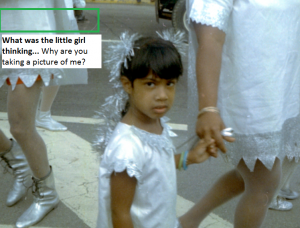
- Are there people in the photograph?
- What are they doing?
- What expressions are on their faces? What is their body language?
- What objects are in the photograph?
- When was the photograph taken?
- Where was the photograph taken?
- Where is the photographer standing in relation to the subject (above, below, in front of, beside, etc.)?
- How would the picture change if he or she was standing in a different place?
- Is this photo spontaneous or posed? How can you tell?
- What is the general mood of the photograph? How can you tell?
Denise shared the answers to her questions through “pop up,” interactive annotations in a Scalar exhibit like Juan Pablo’s public education analysis . To replicate their work, one would have to be familiar with using Scalar ; however, your students can present their analysis of a digital image using something they are more familiar with like WordPress or in a photosharing site like Flickr . There are surprisingly not as many photo analysis tools for DHSS as one would think. Thus, to show students’ analyses, you can be creative in the tools your students already know, such as PowerPoint or Prezi , as well as integrate their formal analysis into other assignments , such as developing an exhibit , creating metadata , mapping , or proving/disproving an argument .
However, engaging in analysis through the lens of DHSS should invite students to think about the “digitalness,” for lack of a better word, of a historical photograph that was not created digital. Or other words, the historical specificity of viewing these photographs as digital items should be a highlight of your students’ analyses DHSS. Historical photo analysis should therefore not just ask Denise’s questions above, but also questions such as:
- What is the meaning behind capturing this image?
- Who was the intended audience?
- What is familiar about this image?
- What is surprising?
- What insight does this give us into the past that we would not have without this image?
- How does this image demonstrate the “ we were there/they were there ” element that historical photographs can demonstrate?
Historical Photo Analysis suggestions
Images can be chosen from archived sources but also collections of unidentified photos that can be found on Instagram, Flickr, and other photosharing sites. In many ways, asking your students to analyze less-common photographs than the ones used in class may elicit more complex discussions during content analysis.
Doing Digital Humanities and Social Sciences in Your Classroom by Samantha Cutrara is licensed under a Creative Commons Attribution-NonCommercial 4.0 International License , except where otherwise noted.
| GEOG 480 Exploring Imagery and Elevation Data in GIS Applications |
Geography Department Penn State
- Orientation
- Instructor Information
- Program Home Page
- VoiceThread
- Esri Virtual Campus
- How To Succeed in GEOG 480
- Library Resources
- Getting Help
Lesson 7: Basic Concepts of Image Analysis
- Lesson 7 Introduction
- Multispectral Remote Sensing Systems
- Preprocessing
- Image Interpretation
- Band Assignment
- Digital Image Classification
- How to Order
Visual Analysis Essay
Visual Analysis Essay - A Writing Guide with Format & Sample
14 min read
-10652.jpg&w=640&q=75)
People also read
Learn How to Write an Editorial on Any Topic
Best Tips on How to Avoid Plagiarism
How to Write a Movie Review - Guide & Examples
A Complete Guide on How to Write a Summary for Students
Write Opinion Essay Like a Pro: A Detailed Guide
Evaluation Essay - Definition, Examples, and Writing Tips
How to Write a Thematic Statement - Tips & Examples
How to Write a Bio - Quick Tips, Structure & Examples
How to Write a Synopsis – A Simple Format & Guide
How to Write a Comparative Essay – A Complete Guide
List of Common Social Issues Around the World
Writing Character Analysis - Outline, Steps, and Examples
11 Common Types of Plagiarism Explained Through Examples
Article Review Writing: A Complete Step-by-Step Guide with Examples
A Detailed Guide on How to Write a Poem Step by Step
Detailed Guide on Appendix Writing: With Tips and Examples
A visual analysis essay is a common assignment for the students of history, art, and communications. It is quite a unique type of academic essay.
Visual analysis essays are where images meet text. These essays aim to analyze the meanings embedded in the artworks, explaining visual concepts in a written form.
It may sound difficult to write a visual analysis essay, but it can be done in simple steps by following the right approach. Let’s dive into the writing steps, tips, example essays, and potential topics to help you write an excellent essay.
- 1. What is a Visual Analysis Essay
- 2. How to Write a Visual Analysis Essay - 7 Simple Steps
- 3. Tips on How to Analyze a Photograph
- 4. Tips on How to Analyze a Sculpture
- 5. Visual Analysis Essay on Advertisement
- 6. Visual Rhetorical Analysis Essay Examples
- 7. Visual Analysis Essay Topics
What is a Visual Analysis Essay
A visual analysis essay basically requires you to provide a detailed description of a specific visual work of art. It is a type of analytical essay that deals with imagery and visual art instead of texts.
The subject of a visual analysis essay could be an image, painting, photograph, or any visual medium.
In this type of essay, you need to describe the artwork and analyze its elements in detail. That is, how different elements and features fit together to make the whole work stand out. In this sense, you need to use a mixture of descriptive writing and analytical language.
To write a good visual analysis essay, you need to know the basic visual elements and principles of design. Let’s learn about these concepts first before diving into the writing steps.

Paper Due? Why Suffer? That's our Job
Visual Elements for a Visual Analysis Essay
Writing a visual analysis essay involves analyzing the visual elements of a piece of art. These elements form the basis of the features and characteristics of an image.
Below you can find the common visual elements of a visual analysis essay.
| The element composition describes how things relate to each other. When you are analyzing an image, focus on answering questions related to composition. These questions include what the primary figure is, how other figures are placed, and what is left out. | |
| It is the part of an image where the artist intends to draw the audience's attention. Understanding the focal point helps you grasp the overall meaning of the image. | |
| When writing a visual analysis essay, you must describe how colors affect the image. You should focus on the colors and how it affects the overall tone and mood of the image. | |
| This is about the actual lines presented in the image. You need to describe how lines help grab the audience’s attention toward the specific parts of the image. | |
| It is about how smooth or rough an object is. A texture can either be real on two-dimensional art or three-dimensional art. | |
| It is about how the artist uses various shapes in the image. It includes ovals, circles, squares, and rectangles. You should describe what shapes are used by the artist and what they represent. | |
| It refers to the aspect of light and shading. Through this element, the writer can make 2D objects appear like 3D objects. You should focus on where the writer has used light and shading to enhance aspects of their work. | |
| It refers to the degree to which the artist has used dark and light aspects in some specific parts of the work. You should discuss how the artist has used these elements in their work. | |
| It is about the overall size of the image with a relative size of figures provided in it. You should explain why the artist has selected a particular image size and why different objects have different sizes. | |
| It refers to the use of objects with a symbolic meaning in the image. You should identify whether the image has symbolic objects in it and what they represent. |
Principles of Design in a Visual Analysis Essay
In addition to visual elements, you must also consider the principles of design for writing a great visual analysis essay. These principles help you identify and explain the characteristics of the image.
| It refers to the distribution of different visual elements in the image. You should describe images by addressing symmetrical, asymmetrical, and radical balance. | |
| It refers to the object that draws the audience’s attention when they look at the image. You should discuss how the artist uses various elements to enhance some parts of the image. | |
| It refers to the use of objects in the image or visual display repeatedly. You should identify objects or symbols used repeatedly in the image. | |
| When writing a visual analysis essay, you must describe how colors affect the image. You should focus on the colors and how it affects the overall tone and mood of the image. | |
| This principle is about whether the relationship between objects in the image or visual display is realistic or not. Explain what the artist tried to convey through their artwork. | |
| To what extent the artist has used elements in the image to influence the audience’s perception. You should explain how different elements are used in the image to create a certain mood or meaning. | |
| It refers to the use of opposing elements. You need to describe the contrasting elements and if they affected the overall quality of the image. | |
| It refers to the degree to which people viewing an image can process it. This principle indicates the importance of color, size, and other elements in an image. | |
| This principle is about the use of spaces between repetitive elements. There are different types of symmetrical designs, and you should describe how the artist used them in the image. | |
| It refers to the use of objects in the image. It is basically about the distribution and placement of objects and symbols in the image. You need to explain how the artist has used different objects and how they are placed in the image. |
How to Write a Visual Analysis Essay - 7 Simple Steps
Now that you have an idea about visual elements and principles, you are now ready to proceed.
Here are the steps that you need to follow for writing a visual analysis essay. Let’s discuss them in detail.
Step 1 - Gather General Information About the Artwork
Once you have a specific artwork or image, here is how to start a visual analysis essay. You need to ask some basic questions about the work and jot down your ideas.
This pre-writing step is for brainstorming ideas. Ask these questions to begin:
- Who and what does the artwork represent?
- Who is the author of the piece?
- Who did the artist create the work for? Who is the intended audience?
- When and where was the work created? What is its historical context?
- Where was this work displayed for the first time?
- Identify which medium, materials, and techniques were used to create the image?
Step 2 - Note Down the Characteristics of the Artwork
The next thing that you need to do is identify what the image depicts. Moreover, you need to identify and describe the visual art elements and design principles used in the work.
Here’s what you need to note:
- The subject matter and its representation.
- Colors, shapes, and lines used in the composition.
- The balance, proportion, and harmony within the artwork.
- Any symbolism or metaphors present.
By pointing out such characteristics, you set the stage for a nuanced analysis in your essay.
Step 3 - Visual Analysis Essay Outline
Once you have gathered your main points by carefully studying the image, you should now organize them in an outline.
Here is how you make an outline for your visual analysis essay:
|
Step 4- Write the Introduction
This is the first paragraph of a visual analysis essay in which you need to provide some background information on the topic. After grabbing the readers’ attention with an interesting fact, briefly provide information on the following points.
- Talk briefly about the painting and its artist or creator.
- Provide a brief description of the painting and give historical context
- Add an interesting fact about the artist or the painting.
The introduction should end with a thesis statement. The visual analysis essay thesis states the analysis points on the artwork that you aim to discuss in your essay.
Step 5 - Provide Detailed Description, Analysis, and Interpretation
In the body section, you need to explore the artwork in detail. In the first body paragraph, simply describe the features and characteristics of the work. For instance, talk about the technique being used, shape, color, and other aspects to support your thesis.
In the next paragraphs, you can go into the analysis and interpretation of these elements and the work as a whole. Present all the details logically and discuss the relationship between the objects. Talk about the meaning, significance, and impact of the work.
Step 6 - Writing a Conclusion
Once you have completed the body section, move to the conclusion paragraph. This is the last paragraph of the essay that should be strong and well-written to create a sense of closure.
Here’s how you can do it
- Revisit the main insights gained through the analysis, summarizing the key visual elements and principles discussed.
- Emphasize the significance of cultural or historical context in interpreting the visual narrative.
- Tie together the threads of your analysis to reinforce your thesis or main argument.
- End with a memorable statement and encourage readers to carry the lessons learned from the analysis into their own encounters with art.
Step 7 - Edit & Revise Your Essay
Here’s how to end your visual analysis essay: edit and revise your first draft until it becomes the perfect version. Consider these steps for an excellent revision:
- Review for Clarity: Ensure your ideas flow logically. Clarify any ambiguous or unclear statements to enhance the overall readability of your essay.
- Trim Unnecessary Details: Trim excess information that doesn't directly contribute to your main points. Keep your analysis focused and concise.
- Check Consistency: Verify that your writing style remains consistent throughout the essay. Maintain a balance between formal language and engaging expression.
- Fine-Tune Transitions: Ensure smooth transitions between different sections of your essay. Transitions help guide your reader through the analysis, making the journey more enjoyable and comprehensible.
- Proofread for Errors: Carefully proofread your essay for grammar, spelling, and punctuation errors. A polished essay enhances your credibility and the overall professionalism of your work.
With these basic steps, you can craft an amazing visual analysis essay. Read on for some useful tips for analyzing different kinds of visual subjects.
Tips on How to Analyze a Photograph
Painting and photograph analysis are very similar. There are three ways in which photo visual analysis is conducted: description, reflection, and formal analysis.
Although the historical study may be used, it is not necessary.
- Description - It implies examining the picture carefully and considering all of the details. The description should be neutral, focusing on simple facts without expressing a personal viewpoint.
- Reflection - For the next stage, consider the emotions that the picture stirs in you. Every viewer will have a distinct viewpoint and feelings about the piece. Knowing some historical background might be useful when formulating an educated response.
- Formal analysis - Consider the visual components and concepts. How are they shown in the photo?
- Historical analysis - For a contextual analysis, keep an eye on the photo's surroundings. Make sure you comprehend the surrounding environment in which the photograph was taken. What era was this image shot during?
Tips on How to Analyze a Sculpture
A sculpture, unlike a painting or photograph, requires a different approach to visual analysis. It still depends on visible components and principles, however it does so in a slightly different way.
When you're writing about sculptures, keep the following in mind:
- Medium, size, and technique - What kind of material is it? Is it carved in a negative or positive method?
- Color and lightning - Describe the hue of the sculpture, whether it is painted. Was the sculptor concerned with the illumination when creating the work?
- Human body and scale - Consider how a human body is portrayed in the piece. Also, assess the sculpture's size compared to that of the viewer.
- Function - What was the sculpture's main aim? You could speak about whether it represented a religious conviction or honored someone, for example.
- Composition - Examine the placement of the piece and determine whether there is a focal point.
Tough Essay Due? Hire Tough Writers!
Visual Analysis Essay on Advertisement
In advertisements, visuals are used to pique interest or persuade the public that what is being advertised is needed. The goal of a visual argument is to generate attention and intrigue. Images are utilized in advertisements to transmit information and interact with the audience.
When conducting a visual analysis of an ad, keep the following in mind:
- Textual Elements
- Illustrations
- Composition
This all has an impact on how people perceive information and how they react to it.
When you analyze the visuals of an ad, you're performing a rhetorical analysis. The study of images and extracting information from them is known as visual rhetoric. It aids in the comprehension of typography, imagery, and the structure of elements on the page.
How to Write a Visual Analysis Paper on an Advertisement
Visual components in advertising are important. It aids in the persuasion of the audience.
Always keep the rhetorical situation in mind while analyzing visual arguments. The following are some key elements to consider:
- Audience - Who is the advertisement meant to attract?
- Purpose - What message does the photo try to get across to the audience?
- Design - What kind of visualizations are included? Are the visuals clear and easy to follow? Are there any patterns or repetitions in the design?
- Strategies - Is there any humor, celebrities, or cultural allusions in the graphic's message?
- Medium - Is the photograph surrounded by text? Is there any text within the picture? How does it interact with the picture to produce an intended effect if there is any?
- Context - What are the characters in an ad? Where are they positioned?
- Subtext - Consider the meaning of the picture's words. What are they trying to say?
Visual Rhetorical Analysis Essay Examples
Here are some visual analysis essay samples that you can read to understand this type of essay better.
Art history Visual Analysis Essay Example
Political Cartoon Visual Analysis Essay
Rhetorical and Visual Analysis Essay Sample
Mona Lisa Visual Analysis Essay
Visual Analysis Essay Topics
Here are some top visual analysis essay topics that you can choose from and begin the writing process.
- Make a review of your favorite Hollywood production and discuss the visual arts involved.
- Write about the use of color and action in TV commercials.
- Discuss how the brand name is displayed in digital media campaigns.
- Discuss different types of visual appeals used in web ads.
- What is the special about Cleo Award-winning ads?
- The Use of Light and Shadow in Caravaggio's "The Calling of Saint Matthew"
- The Symbolism of Colors in Vincent van Gogh's "Starry Night"
- What is the importance of art and culture in our life?
- How has art changed over the last 50 years?
- The use of colors in marketing and advertising.
To conclude,
From gathering information about the artwork to crafting a compelling analysis, we've navigated the essential steps you need for a visual analysis essay. Moreover, with the specific tips and examples, you have everything you need to get started.
So dive into the writing process with confidence and return to this blog whenever you need help on any step!
Do you often find yourself asking a question like: can I pay someone to do my essay ?
Our professional essay writers at MyPerfectWords.com can help you with your visual analysis essay assignment. Contact us with your order details, and we will get it done for you.
Place your order now and get the best visual analysis essay writing help you need.

Write Essay Within 60 Seconds!

Dr. Barbara is a highly experienced writer and author who holds a Ph.D. degree in public health from an Ivy League school. She has worked in the medical field for many years, conducting extensive research on various health topics. Her writing has been featured in several top-tier publications.

Paper Due? Why Suffer? That’s our Job!
Keep reading

ENGL 1010: College Composition & Rhetoric: Visual Analysis
- Getting Started
- Visual Analysis
- Evaluate Sources
- Find Background Information
- Find Sources
- Annotated Bibliographies
- Cite Sources
Visual Analysis Assignment
The Visual Analysis assignment requires you to locate a still, visual text for analysis during your time in the course. Examples of this may include a public service announcement (PSA), advertisement, album cover, or other type of visual text your instructor decides on.
Your essay will look into how the visual text persuades its audience through a thesis-based argument. A focus on the rhetorical appeals of ethos, pathos, and logos--- as well as their roles in shaping the need for the visual text within a specific cultural and historical context---will be expected of you in this assignment.
This page will aid you in the process of discovering the art of rhetorical reading and observation through finding useful resources and accessing available services through UW Libraries which is always open and ready to assist you in any way. Feel free to stop by , make an appointment , or contact us through email or chat!
"Research is seeing what everybody else has seen and thinking what nobody else has thought."
Albert Szent-Györgyi
Finding Recent PSAs - Tutorial

- ENGL 1010 - Finding Recent PSAs through UW Libraries
Finding Older PSAs - Tutorial
- ENGL 1010 - Finding Older PSAs through UW Libraries
Using Google's Advanced Image Search - Tutorial

- ENGL 1010 - Using Google's Advanced Image Search
Google Search Options
- Google Advanced Image Search Advanced search feature by Google for images. Recommended for the VA assignment.
- Google Advanced Search Similar to the Google Advanced Image Search, this feature allows users to search for supplementary sources.
How to Cite Images - APA & MLA
Depending on your instructor, you will be asked to cite your resources in either APA or MLA format.
Since you'll most likely be accessing your image through either a website or database, the below examples are made to portray that. The links at the end will give you more information on citing different resource types.
MLA (9th Edition):
- In-text citation: "..." (Creator's last name or Corporation , "Title of image").
- Pacific Outdoor. "Fight Back...Drive 55! A Billboard Editorial." Duke Digital Collections , https://repository.d uke.edu/dc/outdooradvertising/ BBB5007. Accessed 31 August 2023.
MLA Citation Guide through OWL Purdue
APA (7th Edition):
- In-text citation: "..." (Creator's last name or Corporation , Year)
- Pacific Outdoor. (n.d.). Fight Back...Drive 55! . Duke Digital Collections. https://repository. duke.edu/dc/outdooradvertising/ BBB5007
APA Citation Guide through OWL Purdue
Popular Image Database Collections - Multidisciplinary
- Associated Press Images Collection This link opens in a new window A collection from the Associated Press chronicling moments in history through photographs, audio sound bites, graphics, and text.
- Ebsco Image Collection (click on "Images" in MasterFile Complete) This link opens in a new window Multidisciplinary image collection database.
Subject-Specific Databases
The following databases provide visual resources of interesting topic for your assignment. Feel free to play around and search their collections!
- First World War: Personal Experiences; Propaganda and Recruitment; Visual Perspectives and Narratives; A Global Conflict This link opens in a new window Collection of various WWI materials for research includes recruitment posters and ephemera. On the Adam Matthew platform.
- Gender: Identity and Social Change This link opens in a new window Primary source collection on the changing nature of gender roles from the nineteenth century to the present.
Chicano studies database with full-text articles, documents, media, speeches, maps, songs, interviews, and photographs. On the ABC-CLIO platform.
Database concerning political extremism consisting of periodicals, government records, oral histories and campaign ephemera from 1900 – 2010s. On the Gale platform.
Popular Databases for Finding Secondary Sources
Database platform that includes 100-some other indexing, full-text and reference databases (listed separately). On the ProQuest platform.
Multidisciplinary indexing/full-text database that covers scholarly journal articles back to 1975. On the EBSCOhost platform.
- Britannica Academic Edition This link opens in a new window Full-text reference database that includes encyclopedia articles from Encyclopædia Britannica, primary sources, and media. On the Britannica platform.
- JSTOR (Journal Storage Archive) This link opens in a new window eJournal platform running complete back runs of journals in a multitude of disciplines. On the JSTOR platform.
Resources Outside of UW Libraries
The below resources can be found outside of UW Libraries. They offer verified collections of visual text that can be used for your VA assignment.
- The Ad Council A non-profit organization which produces, distributes, and promotes public service announcements for a variety of sponsors.
Visual Rhetoric - Helpful Links

- Purdue OWL: Visual Rheoric by OWLPurdue
Three Rhetorical Appeals - Helpful Links

- The Three Persuasive Appeals: Logos, Ethos, and Pathos by Kristina Ulmer
- << Previous: Getting Started
- Next: Evaluate Sources >>
- Last Updated: Sep 12, 2024 2:49 PM
- URL: https://uwyo.libguides.com/ENGL1010
Navigation Menu
Search code, repositories, users, issues, pull requests..., provide feedback.
We read every piece of feedback, and take your input very seriously.
Saved searches
Use saved searches to filter your results more quickly.
To see all available qualifiers, see our documentation .
- Notifications You must be signed in to change notification settings
🎓 A collection of Code Example Files, Programming Assignments and Final Project for "Introduction to Data, Signal, and Image Analysis with MATLAB", Coursera, September-October, 2021
huaminghuangtw/Coursera-Introduction-to-Data-Signal-and-Image-Analysis-with-MATLAB
Folders and files.
| Name | Name | |||
|---|---|---|---|---|
| 13 Commits | ||||
Repository files navigation
Coursera-introduction-to-data-signal-and-image-analysis-with-matlab.

Instructor: Jack Noble
| A collection of , and for . I took this online course on Coursera platform during September-October, 2021. ( ) |
DISCLAIMER: Please do not simply copy the code without trying to solve the problems yourself in the first place. The author reserves all rights but does not be liable in any event (e.g., plagiarism) caused by the use of the program. Remember that one can only learn programming by doing it. Have fun coding!😃
This course is the last part of the specialization MATLAB Programming for Engineers and Scientists Specialization , offered by Vanderbilt University. It provides an introduction on how to use MATLAB for data, signal, and image analysis. After completing the course, learners will understand how machine learning methods can be used in MATLAB for data classification and prediction; how to perform data visualization, especially for high dimensional datasets; how to perform image processing and analysis methods, including image filtering and image segmentation; and how to perform common signal analysis tasks, including filter design and frequency analysis.
Naming convention
- For file names starting with Example : code examples that are demonstrated in the lectures
- For file names starting with Quiz : scripts and answers for quizzes
- For file names starting with <function-name> (e.g., EstimationErrorPlot.m ): function definition required for completing the assignments
- For file names starting with Script (e.g., Script_EstimationErrorPlot.m : scripts that are used to call the corresponding functions in the assignments
Final project
In the final project of this course, I developed an image analysis-based solution for counting coin change for a bank. A camera is placed above the bank teller's countertop which will photograph coins placed on the countertop. When someone spreads any combination of quarters , nickels , and dimes on the countertop, my program will analyze an image taken from the camera to: (1) localize the coins, (2) classify each coin as a quarter, nickel, or dime, (3) add up the total value of the coins shown in the image.

Steps to achieve the goal
- Localize the centroid of each coin
- Measure features for each coin using a "bank" of matching filters
- Perform k-means clustering of features for an unsupervised learning coin-type classifier, sum up the total value of coins, and visualize the results
How to run the program?
Simply run the script Final_project_script_3.m , which is the final version of the implementation to solve the problem. The output should look identical to the image above.
Recommended further readings
- For Signal Analysis: Oppenheim, Alan V.; Willsky, Alan S.; Nawab, Syed Hamid (1997): Signals and systems. 2. ed.
- For Image Analysis: Šonka, Milan; Hlaváč, Václav; Boyle, Roger (2015): Image processing, analysis, and machine vision. 4. ed.
If you have any question or suggestion, feel free to contact me at [email protected] . Contributions are also welcomed. Please open a pull-request or an issue in this repository.
Sponsor this project
- https://www.paypal.com/paypalme/huaminghuang
- https://www.buymeacoffee.com/huaming.huang
- MATLAB 100.0%

- Library Service Center
- Science Commons
- Stuart A. Rose Manuscript, Archives, and Rare Book Library
- Research and Learning
- Teaching and Learning With Rose Library
- Assignments Portal
- Assignments
Visual Analysis Assignment
Introduction.
For this assignment, students will examine Rose Library materials to select an image with which to complete a detailed analysis of the visual rhetoric of that image. They will select a concept or issue that they feel the image represents to develop their argument.
After completing this assignment, students will be able to
- conduct archival research
- read library catalogue and finding aid information
- practice appropriate care and handling of archival materials
- develop an analytical argument based on primary source research, emphasizing analytical, rhetorical, and critical thinking skills
In order to make the most of your time during your Rose Library Session, please be sure to prepare your students in advance.
- Instructor should provide a clear goal of what students should accomplish during rotations
- Prior to the session, students should understand what they are looking for while examining the materials
- Students should have a clear sense of what they need to know about an object to complete the assignment successfully
Here’s what you can expect during your class session
- Introduction to the Rose Library (if this is the first class visit)
- Introduction to the materials in use
- Care and handling instructions
- Speed dating session format
For this assignment, students will write an essay of approximately 4 pages.
Instructors may choose to assign blog posts or other low stakes assignments as scaffolding in preparation for writing their essay. For example, have students write detailed observations of their selected image in list format without forming an argument.
Instructors are encouraged to have students compose a reflection essay about the experience of using archival materials in this composition.
Any collection, or combination of materials from different collections, can be used for this assignment. The focus of the course will determine what materials will be most appropriate. Please consult with Rose Library Staff to determine what collections and materials might be most relevant for your class.
Some sample recommendatons are:
- Photography collections, such as the Langmuir Collection , are particularly well suited.
- Journals, magazines, newspapers, Yellowbacks , selected book covers, artists’ books , comic books, broadsides, etc. would all work very well with this assignment.
This assignment works best when students have opportunities to practice visual analysis in class. Before bringing students for their Rose Library session, instructors should spend time in class guiding students through the process of analyzing an image. Consider using a worksheet during the Rose Library Session to help students focus on important details.
To cite this page:
Early, Shanna. "Visual Analysis Assignment," Rose Library Teaching with Archives Portal, [date of access], http://rose.library.emory.edu/instruction/portal/assignments/topical-text.html .
Please cite this portal and give credit to the creator when using this assignment.
Shanna Early PhD candidate in the Department of English at Emory
Use In ENG 101 Expository Writing: Composition and Comics Intensive writing course fulfilling first-year writing requirement, with a focus on multi-modal and multi-genre composition and rhetorical skills. Comic books and graphic narrative were the topic of this particular class.
Adaptability This assignment is highly flexible, suitable for 100-level classes focused on rhetoric, visual culture, or art.
- Highly adaptable and can work with any course theme
- Students will not need to return to their reading room to spend more time with their materials
Highlighted Materials The African-American Comics Collection
- Gus Lemoine, Fast Willie Jackson (Serial 2015 16)
- Anthony Jappa, Original Man (Serial 2015 26)
- MD Bright, Icon (Serial 2015 8)
- Marc McLaurin, Cage (Serial 2015 31)
Course Materials Printable Assignment Sheet
Educator Resources

Document Analysis
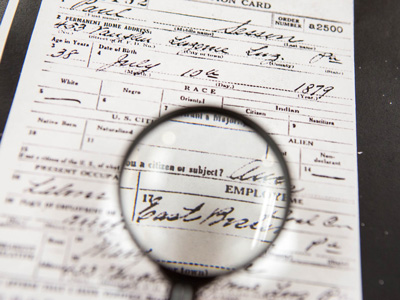
Document analysis is the first step in working with primary sources. Teach your students to think through primary source documents for contextual understanding and to extract information to make informed judgments.
Use these worksheets — for photos, written documents, artifacts, posters, maps, cartoons, videos, and sound recordings — to teach your students the process of document analysis.
Follow this progression:
Don’t stop with document analysis though. Analysis is just the foundation. Move on to activities in which students use the primary sources as historical evidence, like on DocsTeach.org .
- Meet the document.
- Observe its parts.
- Try to make sense of it.
- Use it as historical evidence.
- Once students have become familiar with using the worksheets, direct them to analyze documents as a class or in groups without the worksheets, vocalizing the four steps as they go.
- Eventually, students will internalize the procedure and be able to go through these four steps on their own every time they encounter a primary source document. Remind students to practice this same careful analysis with every primary source they see.
Worksheets for Novice or Younger Students, or Those Learning English
- Written Document
- Artifact or Object
- Sound Recording
See these Worksheets in Spanish language
Worksheets for Intermediate or Secondary Students
Worksheet for understanding perspective in primary sources - for all students and document types.
This tool helps students identify perspective in primary sources and understand how backgrounds, beliefs, and experiences shape point of view.
- Understanding Perspective in Primary Sources
Former Worksheets
These worksheets were revised in February, 2017. Please let us know if you have feedback. If you prefer the previous version of the worksheets, you can download them below .
- Motion Picture

Radiographic Image Analysis
Radiography Theory
Materials Included

This information-rich module teaches you about radiographic image analysis, including how to manage the factors that affect image quality.
Purchase Now
The core responsibility of a radiologic technologist is the taking of optimal radiographic images suitable for diagnostic purposes, in order to ensure the patient obtains the full benefit of the examination. It is therefore critical to analyse each X-ray image thoroughly, using a step-by-step process, and take corrective action if necessary, in order to produce an optimal image.
This information-rich module teaches you about radiographic image analysis, including how to manage the factors that affect image quality. It includes over 100 examples of X-ray images, explains how to assess the quality of each one, and details the specific corrective actions that can be taken to improve the image quality. This module is ideal if you are studying for the American Registry of Radiologic Technologists® (ARRT) registry exam.
You’ll learn
- the steps involved in effective image analysis
- to identify the factors involved in image acquisition and their effect on image quality
- the correct method for displaying images for evaluation
- to identify the specific requirements for projections of the head, chest, pelvis, spinal column and extremities
- how to identify common image quality issues and the appropriate corrective action
- much more (see “content details” for more specific information)
- Describe the role of the radiologic technologist in image analysis.
- Describe an effective image analysis method.
- Identify the steps in the decision-making process used in image analysis.
- Discuss the impact of patient preparation on the resulting radiographic image.
- Explain the importance of proper patient positioning and how it contributes to an acceptable radiograph.
- Discuss the elements of a radiographic image.
- Correlate the criteria for producing a diagnostic-quality radiograph to the elements of a radiographic image.
- Apply the process for evaluating images for adequate density/brightness, contrast, recorded detail/spatial resolution, and acceptable limits of distortion.
- Explain how the radiologic technologist determines that an adequate level of penetration has been applied to produce the desired level of contrast.
- Analyze images to determine the appropriate use of beam restriction.
- Identify the radiographic appearance of common equipment malfunctions that affect image quality and take corrective action.
- Differentiate between technical factor problems, procedural factor problems, and equipment malfunctions.
- Critique images for appropriate technical and procedural factors, and recommend corrective actions, if necessary.
- Explain the Patient's Bill of Rights, Patient Privacy Rule (HIPAA), and Patient Safety Act.
The SIMTICS modules are all easy to use and web-based. This means they are available at any time as long as the learner has an internet connection. No special hardware or other equipment is required, other than a computer mouse for use in the simulations. Each of the SIMTICS modules covers one specific procedure or topic in detail. Each module contains:
- an online simulation (available in Learn and Test modes)
- descriptive text, which explains exactly how to perform that particular procedure including key terms and hyperlinks to references
- 2D images and a 3D model of applied anatomy for that particular topic
- a step by step video demonstration by an expert
- a personal logbook that keeps track of all the modules the learner has studied and how long
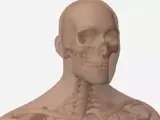
Other modules in this pack
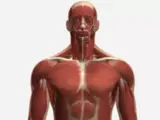
Basic Radiographic Techniques
Radiography Procedures
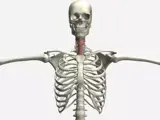
Non-Routine Projections for Chest, Neck, Upper Extremities & Shoulder Girdle
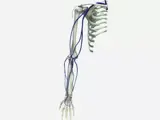
Pharmacology and Drug Administration
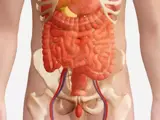
Radiography of the Abdomen and Pelvis
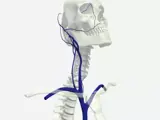
Radiography of the Central Nervous System, Circulatory System, and Arthrography
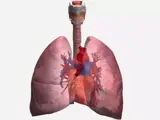
Radiography of the Chest, Bony Thorax, and Soft Tissues of the Neck
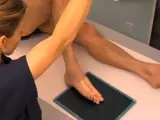
Radiography of the Lower Extremity and Hip
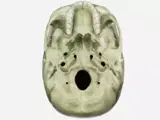
Radiography of the Skull, Cranial and Facial Bones, and Paranasal Sinuses

Radiography of the Spinal Column
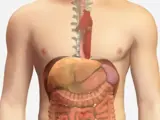
Radiography of the Upper and Lower Gastrointestinal Systems and the Biliary Tract
Cookie Notice
If you decline, your information won’t be tracked when you visit this website. A single cookie will be used in your browser to remember your preference not to be tracked.
Accept cookies
- Biotechnology
- NOC:Medical Image Analysis (Video)
- Co-ordinated by : IIT Madras
- Available from : 2022-05-16
- Intro Video
- Medical Image Analysis - Introduction
- X-ray imaging
- MRI Physics
- MAGNETIC RESONANCE IMAGE ACQUISITION
- ULTRASOUND IMAGING
- RADIONUCLIDE IMAGING
- Basic Image Processing Methods
- Contrast Enhancement
- Histogram Equalization
- Edge Enhancement - Laplacian
- Noise Reduction
- Diffusion Filtering
- Bayesian Image Restoration
- Registration Introduction
- Image Coordinates
- NonRigid Registration
- Demons part - 1
- Demons part - 2
- FFDBSplines
- Endoscopy - Where are we with AI ?
- Computer vision & DL in the operating room
- ML in intraoperative tissue identification
- Basic Image Processing Techniques Using MATLAB
- Image Registration Using Matlab
- Basic Image Processing Techniques Using Python
- Calculus of Variations
- Snakes - Active Contour Models
- Segmentation Models Demo [Snakes (Active Contours ) Chan-Vese segmentation, Geodesic active Contour]
- ACTIVE SHAPE MODELS
- Snake tutorial
- Level Set Method
- Chan Vese Segmentation
- Neural Networks Introduction
- Linear Regression
- Gradient Descent Formulation
- Linear Regression Demo
- Feed forward neural Networks
- Example with XOR
- Introduction to CNNs
- Max Pooling
- Applications of Cnns
- CNN Training
- Semantic Segmentation
- Classification Demo in Pytorch
- Generative Models
- GAN Final Demo
- Watch on YouTube
- Assignments
- Download Videos
- Transcripts
| Sl.No | Chapter Name | MP4 Download |
|---|---|---|
| 1 | Medical Image Analysis - Introduction | |
| 2 | X-ray imaging | |
| 3 | MRI Physics | |
| 4 | MAGNETIC RESONANCE IMAGE ACQUISITION | |
| 5 | ULTRASOUND IMAGING | |
| 6 | RADIONUCLIDE IMAGING | |
| 7 | Basic Image Processing Methods | |
| 8 | Contrast Enhancement | |
| 9 | Histogram Equalization | |
| 10 | Edge Enhancement - Laplacian | |
| 11 | Noise Reduction | |
| 12 | Diffusion Filtering | |
| 13 | Bayesian Image Restoration | |
| 14 | Registration Introduction | |
| 15 | Framework | |
| 16 | Image Coordinates | |
| 17 | Transforms | |
| 18 | Metrics | |
| 19 | NonRigid Registration | |
| 20 | Demons part - 1 | |
| 21 | Demons part - 2 | |
| 22 | FFDBSplines | |
| 23 | Endoscopy - Where are we with AI ? | |
| 24 | Computer vision & DL in the operating room | |
| 25 | ML in intraoperative tissue identification | |
| 26 | Basic Image Processing Techniques Using MATLAB | |
| 27 | Image Registration Using Matlab | |
| 28 | Basic Image Processing Techniques Using Python | |
| 29 | Segmentation Models Demo [Snakes (Active Contours ) Chan-Vese segmentation, Geodesic active Contour] | |
| 30 | ACTIVE SHAPE MODELS | |
| 31 | Snake tutorial | |
| 32 | Level Set Method | |
| 33 | Chan Vese Segmentation | |
| 34 | Neural Networks Introduction | |
| 35 | Linear Regression | |
| 36 | Gradient Descent Formulation | |
| 37 | Linear Regression Demo | |
| 38 | Feed forward neural Networks | |
| 39 | Example with XOR | |
| 40 | Introduction to CNNs | |
| 41 | Max Pooling | |
| 42 | Applications of Cnns | |
| 43 | CNN Training | |
| 44 | Semantic Segmentation | |
| 45 | Classification Demo in Pytorch | |
| 46 | Generative Models | |
| 47 | GAN Final Demo |
| Sl.No | Chapter Name | English |
|---|---|---|
| 1 | Medical Image Analysis - Introduction | PDF unavailable |
| 2 | X-ray imaging | PDF unavailable |
| 3 | MRI Physics | PDF unavailable |
| 4 | MAGNETIC RESONANCE IMAGE ACQUISITION | |
| 5 | ULTRASOUND IMAGING | |
| 6 | RADIONUCLIDE IMAGING | PDF unavailable |
| 7 | Basic Image Processing Methods | PDF unavailable |
| 8 | Contrast Enhancement | PDF unavailable |
| 9 | Histogram Equalization | PDF unavailable |
| 10 | Edge Enhancement - Laplacian | PDF unavailable |
| 11 | Noise Reduction | PDF unavailable |
| 12 | Diffusion Filtering | PDF unavailable |
| 13 | Bayesian Image Restoration | PDF unavailable |
| 14 | Registration Introduction | PDF unavailable |
| 15 | Framework | PDF unavailable |
| 16 | Image Coordinates | PDF unavailable |
| 17 | Transforms | PDF unavailable |
| 18 | Metrics | PDF unavailable |
| 19 | NonRigid Registration | PDF unavailable |
| 20 | Demons part - 1 | PDF unavailable |
| 21 | Demons part - 2 | PDF unavailable |
| 22 | FFDBSplines | PDF unavailable |
| 23 | Endoscopy - Where are we with AI ? | PDF unavailable |
| 24 | Computer vision & DL in the operating room | PDF unavailable |
| 25 | ML in intraoperative tissue identification | PDF unavailable |
| 26 | Basic Image Processing Techniques Using MATLAB | PDF unavailable |
| 27 | Image Registration Using Matlab | PDF unavailable |
| 28 | Basic Image Processing Techniques Using Python | PDF unavailable |
| 29 | Segmentation Models Demo [Snakes (Active Contours ) Chan-Vese segmentation, Geodesic active Contour] | PDF unavailable |
| 30 | ACTIVE SHAPE MODELS | PDF unavailable |
| 31 | Snake tutorial | PDF unavailable |
| 32 | Level Set Method | PDF unavailable |
| 33 | Chan Vese Segmentation | PDF unavailable |
| 34 | Neural Networks Introduction | PDF unavailable |
| 35 | Linear Regression | PDF unavailable |
| 36 | Gradient Descent Formulation | PDF unavailable |
| 37 | Linear Regression Demo | PDF unavailable |
| 38 | Feed forward neural Networks | PDF unavailable |
| 39 | Example with XOR | PDF unavailable |
| 40 | Introduction to CNNs | PDF unavailable |
| 41 | Max Pooling | PDF unavailable |
| 42 | Applications of Cnns | PDF unavailable |
| 43 | CNN Training | PDF unavailable |
| 44 | Semantic Segmentation | PDF unavailable |
| 45 | Classification Demo in Pytorch | PDF unavailable |
| 46 | Generative Models | PDF unavailable |
| 47 | GAN Final Demo | PDF unavailable |
| Sl.No | Language | Book link |
|---|---|---|
| 1 | English | Not Available |
| 2 | Bengali | Not Available |
| 3 | Gujarati | Not Available |
| 4 | Hindi | Not Available |
| 5 | Kannada | Not Available |
| 6 | Malayalam | Not Available |
| 7 | Marathi | Not Available |
| 8 | Tamil | Not Available |
| 9 | Telugu | Not Available |

IMAGES
VIDEO
COMMENTS
In other words, they 'hold the future of other children' in their hands. Third, the placement of the sprouts, which rest inside the soil in children's hands, is a strong way to suggest that the future of the ecology is literally 'in our hands.'". Step 6. Add an Introduction and a Conclusion.
15 Image Analysis Assignment Guidelines What is visual rhetoric? Use of images as argument; Arrangement of elements on a page; Use of typography (fonts, etc.) Analysis of existing images and visuals; This essay calls for you to analyze ONE image related to your writing for community change topic. What kinds of things can you analyze?
Image Analysis Peer Review Assignment Guidelines. 22. Synthesis Essay Assignment Guidelines. 23. Creating a Synthesis Question, Learning Logs, and Thesis. 24. Synthesis Matrix: An In Class Exercise. 25. Synthesis Essay Peer Review Assignment Guidelines. VI. Informative Assignments. 26.
Choose an image that lends itself to deep analysis by students. This analysis strategy works best when the image is one that reflects (intentionally or not) a particular opinion, point of view, or perspective. Visual art, propaganda images, photographs, and political cartoons are good examples of visual media that reflect a perspective.
Image Analysis Essay. Assignment Description: Write an argumentative essay based on an image. The argument should focus on the image and the message the image conveys. All evidence for your argument should come from the image. The analysis should come from you. An excellent essay will analyze the image in a way that conveys a deeper meaning ...
This assignment encourages students to do the act of analysis themselves. Doing so will help bypass students' initial resistance to the idea of "reading too much into" ads by asking them to take seriously the fact that an image must be interpreted. 3. ASSIGNMENT FOR A LOWER-DIVISION COURSE: SOCIOLOGICAL IMAGES AS A JUMPING OFF POINT
Step 1: Introduction and Background. Analyzing the art requires setting the stage with a solid analysis essay format - introduction and background. Begin by providing essential context about the artwork, including details about the artist, the time period, and the broader artistic movement it may belong to.
Your students can follow the steps outlined in this image analysis worksheet to closely analyze an image. The worksheet is available as either a PDF or a Google Doc. Learn more about teaching students image analysis techniques in your classroom.
Sample Outline of Visual Analysis Essay. Introduction: Tell the basic facts about the art (see citing your image). Get the reader interested in the image by using one of the following methods: Describe the image vividly so the reader can see it. Tell about how the image was created. Explain the purpose of the artist.
Historical Image Analysis as a DHSS Assignment. Featuring work from Denise Challenger 's exhibit " Playin' Mas, Play and Mas: A pedagogical journey of children and Caribana, 1970-1974 ". Cindy Sherman, Untitled Film Still #21, 1978. For a historian, engaging in image analysis is not an unusual task. There are several image analysis ...
Photo Analysis Worksheet Observations What can you tell by looking at the photo? List all of the things (people, places, things) that you can see in the photograph: Is there an emotional response to the photo? Is the photograph in black and white or color? Is there a caption or citation? If so, what does the caption/citation say?
Lesson 7: Basic Concepts of Image Analysis. Lesson 7 Introduction; Multispectral Remote Sensing Systems; Preprocessing; Image Interpretation; Band Assignment; Band Math; Digital Image Classification; Lesson 8: Terrain Modeling and Analysis
A visual analysis essay is a common assignment for the students of history, art, and communications. It is quite a unique type of academic essay. Visual analysis essays are where images meet text. These essays aim to analyze the meanings embedded in the artworks, explaining visual concepts in a written form.
Chapter 17 examines the elements of visual literacy and analysis most likely to complement the textual literacy emphasized in first-year writing classes and addressed in Print or Textual Analysis: What You Read. A critical understanding of visual texts is key to helping you both as a consumer of the frequent images you encounter in reading and ...
Photo Analysis Worksheet B. Use the chart below to list people, objects, and activities in the photograph. A. Step 2. Inference Based on what you have observed above, list three things you might infer from this photograph. What questions does this photograph raise in your mind? Where could you find answers to them? Designed and developed by the
Download the illustrated PDF version. (PDF) Español Meet the photo. Quickly scan the photo. What do you notice first? Type of photo (check all that apply): Portrait Landscape Aerial/Satellite Action Architectural Event Family Panoramic Posed Candid Documentary Selfie Other Is there a caption? Observe its parts. List the people, objects and activities you see. PEOPLE: OBJECTS: ACTIVITIES: Try ...
An informal image analysis course Prof. Raghuveer Parthasarathy The University of Oregon Email: [email protected] Last modified: July 15, 2020 Background and Motivations In 2014, 2015, and 2016 I taught an informal ("off the books") course on computational image ... Assignment • 2.1 Convolution ...
The Visual Analysis assignment requires you to locate a still, visual text for analysis during your time in the course. Examples of this may include a public service announcement (PSA), advertisement, album cover, or other type of visual text your instructor decides on. Your essay will look into how the visual text persuades its audience ...
This course is the last part of the specialization MATLAB Programming for Engineers and Scientists Specialization, offered by Vanderbilt University.It provides an introduction on how to use MATLAB for data, signal, and image analysis. After completing the course, learners will understand how machine learning methods can be used in MATLAB for data classification and prediction; how to perform ...
This assignment works best when students have opportunities to practice visual analysis in class. Before bringing students for their Rose Library session, instructors should spend time in class guiding students through the process of analyzing an image. Consider using a worksheet during the Rose Library Session to help students focus on ...
Español Document analysis is the first step in working with primary sources. Teach your students to think through primary source documents for contextual understanding and to extract information to make informed judgments. Use these worksheets — for photos, written documents, artifacts, posters, maps, cartoons, videos, and sound recordings — to teach your students the process of document ...
This information-rich module teaches you about radiographic image analysis, including how to manage the factors that affect image quality. The core responsibility of a radiologic technologist is the taking of optimal radiographic images suitable for diagnostic purposes, in order to ensure the patient obtains the full benefit of the examination.
Basic Image Processing Techniques Using MATLAB: PDF unavailable: 27: Image Registration Using Matlab: PDF unavailable: 28: Basic Image Processing Techniques Using Python: PDF unavailable: 29: Segmentation Models Demo [Snakes (Active Contours ) Chan-Vese segmentation, Geodesic active Contour] PDF unavailable: 30: ACTIVE SHAPE MODELS: PDF ...